Water Resources
Taxonomy Term List
National Adaptation Plan to advance medium and long-term adaptation planning in Armenia
With financing from the Green Climate Fund, the 'National Adaptation Plan (NAP) to Advance Medium and Long-term Adaptation Planning in Armenia' project supported the Government of Armenia in formulating a national plan for climate change adaptation. Through an iterative process, the project focused on strengthening foundational capacities with the aim of institutionalizing them for long-term sustainability.
The project aimed to address existing barriers, facilitate the prioritization of climate change adaptation investments in priority sectors—such as water resources, agriculture, energy, health, tourism, and human settlement—and increase the identification of financing options. Through the development of the NAP process, Armenia laid the groundwork for the systematic and iterative identification of medium- and long-term risks. The country not only established adaptation priorities but also designed specific activities to ensure that no one is left behind in its efforts to achieve the goals outlined in the Paris Agreement and the 2030 Agenda for Sustainable Development.
In tandem with the localization of the Sustainable Development Goals (SDGs), the NAP process contributed to the formulation of corresponding national climate-responsive indicators and targets.
The Government of Armenia launched its national stakeholder consultations for the national adaptation plan (NAP) process in June 2016. A preliminary action plan for NAP implementation was formulated during the stocktaking exercise and approved by the representatives of key sectors and the Ministry of Nature Protection. The government recognizes the NAP process as a key step to achieving the adaptation objectives of its 2015 Nationally Determined Contribution (NDC).
The NAP seeks to address the main challenges to the integration of climate change adaptation into national, sectorial, and local government planning and budgeting, as identified in the 2016 stakeholders' consultations and the NAP Stocktaking report. Focus has been given to strengthening foundational capacities for adaptation and ensuring that they are institutionalized for long-term sustainability (beyond the life of the project). It was expected that at least two NAP iterations would be required for a complete and comprehensive mainstreaming of climate change adaptation into the national development framework and into the development plans of all sectors.
NDCs and NAPs
Armenia’s vulnerability to climate change requires greater investments and integration of climate change adaptation and disaster risk reduction. In 2016, the government began discussions regarding the NAP process through national consultations and a rapid stocktaking exercise. This stocktaking provided a qualitative assessment of the institutional framework and capacities relevant to the NAP process.
The NAP is fully aligned with the adaptation component of the NDC and is recognized as a pivotal element in establishing a constructive feedback loop between Armenia's national and international decision-making on climate change.
By embarking on the NAP process, Armenia laid the groundwork for a systematic and iterative identification of medium- and long-term risks, climate change adaptation priorities, and specific activities aimed at fostering climate adaptive and resilient growth in key sectors. This shift from ad-hoc, project-based approaches to a more coherent and strategic climate change adaptation approach, integrated with the implementation of the Paris Agreement, the Sendai Framework, and the 2030 Agenda for Sustainable Development, positions Armenia to achieve a lasting paradigm shift in reducing the climate risks it faces.
Stakeholder Consultations
As an integral part of the NAP process, a comprehensive stakeholder communication and engagement plan, including a gender action plan, was developed. This plan aimed to ensure broad consultation and involvement of diverse stakeholders at all stages of the NAP. Outreach encompassed sensitization, consultations, and training workshops, tailored to meet stakeholders' specific needs for successful implementation. The overarching goal of these engagement activities was to enhance stakeholder ownership, raise awareness, and bolster knowledge regarding the crucial role of climate adaptation in addressing climate change impacts for sustained, long-term engagement. Stakeholders spanned government institutions, financial and technical partners, international and national non-governmental organizations, and local civil society.
Results
Key project achievements include:
Improved Legislative and Policy Frameworks:
- Integration of climate change considerations into governance mechanisms through the National Action Program of Adaptation to Climate Change and the List of Measures for 2021-2025.
- Updates to the structure, mandate, functions, and rules of procedures of the Inter-agency Coordination Council on Climate Change.
- Formation of three permanent working groups supporting the Inter-Agency Coordination Council.
Integration into Legal Instruments and Sector Strategies:
- Amendments to the Water Code addressing climate change risks, vulnerability, adaptation, and water use permit allocation.
- Draft amendments to the Environmental Impact Assessment law to consider climate change-related risks.
- Development and approval of the "2022-2026 Climate Change Adaptation Plan in the Water Resources Sector."
Territorial Governance Improvement:
- Climate risk and vulnerability assessments and adaptation plans for two regions (Tavush and Shirak) and Yerevan city.
- Development and acceptance of guidelines for climate change adaptation planning at the local and regional levels.
Sector Governance Enhancement:
- Revision of irrigation norms in Ararat Valley with recommendations for replication.
- Updates to River Basin Management Plans for the Southern and Ararat River Basin districts.
- Recommendations on institutional arrangements for mudflow risk management.
- Various assessments, including economic cost-benefit analysis and feasibility studies for reservoirs.
Capacity Building, Awareness, and Education:
- Development of guidelines on urban green infrastructure, landslide risk assessment, and climate change adaptation in agriculture.
- Stakeholder communication and awareness strategy.
- Organizing over 90 workshops, trainings, and public events involving more than 3,200 participants.
- Numerous media interviews and stakeholder roundtable discussions initiated.
NAP Process Continuity:
- Assessment and strategy for private sector engagement in climate change adaptation to strengthen the enabling environment for private sector investments
- Design of water resources and agriculture sectors adaptation concept notes.
- Development of a methodology and guideline for evaluating the NAP process monitoring and evaluation (M&E).
- Establishment of MRV frameworks for climate mitigation and adaptation.
Output 1: Gaps assessed and national mandate, strategy and steering mechanism established
Output 2: Climate evidence and knowledge-base for the compilation of a NAP strengthened
Output 3: NAP implementation facilitated
Output 4: Mechanisms for Reporting, Monitoring and Review of NAPs and adaptation progress in place
Output 5: Funding strategy for the NAP and CCA formulated
The project's first output focuses on identifying information and capacity gaps while enhancing synergies and coordination across sectorial initiatives. This involves strengthening both vertical and horizontal synergies, reducing duplication of effort, and ensuring a more cohesive approach to integrating Climate Change Adaptation (CCA) responses into development planning.
Outputs 2 and 3 aim to bolster institutional, functional, and technical capacities to plan for gender-sensitive CCA. Additionally, the project seeks to enhance the existing climate-related knowledge base for more consistent assessments of climate risks, vulnerabilities, and impacts. The ultimate goal is to improve implementation at both national and local levels.
Output 4 is dedicated to establishing climate change adaptation monitoring capacity. The objective is to efficiently integrate CCA into both national and sectorial planning and management processes.
Output 5 involves the development of a CCA financing strategy. This includes supporting private sector engagement through a comprehensive assessment of the enabling environment and barriers, aligning with Armenia's priorities for private sector development.
Armenia steps up adaptation to the climate crisis (2022)
Possibilities and promotion mechanisms of secondary water use in Armenia discussed with stakeholders (2022)
Video: Climate change adaptation in agriculture in Armenia (2022)
Public hearing on updates of Ararat Basin Management Plan held in the frame of UNDP-GCF NAP project (2022)
Public hearing on updates of Southern Basin Management Plan held in the frame UNDP-GCF NAP project (2022)
"Climate Change and Women in Armenia” awards ceremony announced in the frame of UNDP-GCF NAP project (2022)
Climate change and adaptation awareness raising campaign in the frame of UNDP-GCF NAP project (2021)
RA National Adaptation Plan submitted to UNFCCC Secretariat (2021)
Draft RA water sector adaptation plan presented and discussed in the frame of UNDP-GCF NAP project (2021)
Climate Change challenges and opportunities present in Tavush discussed during a regional visit (2021)
Mudflow risk management in Armenia in the center of attention of the UNDP-GCF NAP project (2020)
UNDP-GCF NAP Project continues raising awareness on climate change adaptation processes (2019)
National Adaptation Plan development process continues in Armenia (2019)
NAP Project Inception Seminar (2019)

GCF National Adaptation Plan project in Bhutan
Climate change is expected to bring a raft of changes to Bhutan, including long-term impacts such as rising average temperatures, reduced dry-season precipitation coupled with increased wet-season precipitation, intensified rainfall events, erratic rainfall patterns, and altered monsoon timings. Additionally, the country faces heightened risks of hydro-meteorological and geological disasters, including glacial lake outburst floods (GLOFs), landslides, earthquakes, river erosion, flash floods, windstorms, and forest fires due to climate-related factors.
The hydropower, agriculture, and tourism sectors, collectively contributing nearly a quarter of GDP in Bhutan, are significantly vulnerable to climate variability and natural hazards. In response, this project, supported by the Green Climate Fund (GCF), is dedicated to assisting the Royal Government of Bhutan in further advancing its cross-sectoral National Adaptation Plan process. The project's primary goal is to reduce vulnerability to climate change impacts by enhancing adaptive capacity and resilience. It seeks to facilitate the coherent integration of climate change adaptation into new and existing policies, programs, and activities, especially within development planning processes and strategies across various sectors and at different levels. This includes establishing a robust monitoring and evaluation system for effective implementation.
Despite significant socio-economic progress, Bhutan faces the potential reversal of gains due to the adverse impacts of climate change. Bhutan initiated its National Adaptation Plan (NAP) process in 2015, building on the 2012 National Adaptation Programme of Action (NAPA). The NAP project aims to align with Bhutan’s Nationally Determined Contribution (NDC) by accelerating medium- to long-term adaptation efforts, focusing on priority sectors, such as water resources. In addition, the project seeks to enhance Bhutan's NAP process by addressing challenges related to coordination, learning, awareness, technical capacity, systematic identification of adaptation options, and monitoring and evaluation.
National-level outcomes involve enhanced coordination, knowledge management, technical capacity for climate scenarios, vulnerability assessments, appraised and prioritized adaptation options, and the formulation of the NAP with capacity for implementation and monitoring established. These outcomes include both a comprehensive component on water resources and activities across other climate-sensitive sectors in Bhutan. Barriers to adaptation planning in Bhutan are being identified and addressed through the formulation of the NAP, while institutional frameworks and systems are being strengthened to enable long-term decision-making for climate change adaptation.
This initiative, led by the National Environment Commission Secretariat (NEC) in collaboration with various partners, builds on existing coordination efforts with UNDP and past adaptation projects, such as the GCF Readiness and Preparatory Support project “Strengthening the Capacity of NDA to access resources from the Green Climate Fund.” Mandated by Bhutan's environmental protection and water acts, the NEC’s central role is to ensure synergy with ongoing activities and prioritize adaptation options.
Project Updates
The NAP project has achieved significant milestones, including the successful publication of Bhutan’s NAP by the UNFCCC in September 2023, marked by strong ownership from the NEC and effective guidance from the Project Board and Technical Working Group. Additionally, the submitted NAP serves as Bhutan’s Adaptation Communication under the Paris Agreement. The NAP draft was presented to officials from all 20 districts, central-level agencies, development partners, civil society, private sector, and academia. A NAP implementation progress report was also produced aiming to inform the government, public, and international community about Bhutan's advancements in climate change adaptation.
The objectives of Bhutan’s NAP process are to:
1. Ensure a continuous, progressive, and iterative process to assess the vulnerability and adaptation needs across all sectors and levels in Bhutan recognising the special needs of vulnerable groups through the National Adaptation Plan process.
2. Promote the integration of climate change adaptation planning and implementation of adaptation actions into national and local level plans where possible.
3. Enhance the climate information and knowledge system to support a long-term, iterative process of adaptation planning and implementation.
4. Assess progress in adaptation including measurement of resilience and to climate change.
Project activities have made significant strides in establishing institutional arrangements, stakeholder mapping, and drafting NAP protocols and guidelines. Bhutan has successfully conducted capacity assessments, participated in global events, and developed data management protocols and a climate platform. Activities like stocktaking of climate information, vulnerability analyses, and sector-specific training programs have contributed to increased awareness and improved capacity. Notably, climate training sessions were conducted for mid-level civil servants in all 20 districts and 205 local governments and a report on climate change vulnerability analysis and mapping was compiled to evaluate vulnerable regions.
The NAP has actively incorporated insights from past vulnerability assessments, ensuring a thorough understanding of sector-specific vulnerabilities across Bhutan, including those from the Third National Communication (TNC) to the UNFCCC and various sectoral reports. This has supported sector prioritization and climate risk assessments on agriculture, health, forests and biodiversity, energy, and water resources. This includes a comprehensive assessment of groundwater in Sarpang District and preparations for the GEF-LDCF Urban Resilience Project, with a focus on Thimpu and Paro areas, addressing a mix of hard and soft adaptation priorities outlined in the NAP. Three key proposals have concentrated on green infrastructure for Thimphu City, web-based meteorological services, and a hydrological system for flood forecasting and early warning services, further contributing to Bhutan's robust approach to adaptation planning and capacity-building initiatives.
Outcome 1: Enhanced coordination, learning and knowledge management for an iterative NAP process.
Outcome 2: Technical capacity enhanced for the generation of climate scenarios and impact assessment.
Outcome 3: Vulnerability assessments undertaken and adaptation options prioritized.
Outcome 4: NAP formulated and capacity for implementation and monitoring established.
A milestone in Bhutan’s journey to adapt to climate change
Bhutan launches a new $8.9M project to build climate resilience of its water sector
Bhutan launches its first National Adaptation Plan
Safeguarding Bhutan's water in the face of climate change
NAP Expo 2023: What we heard on scaling up implementation of...
Bhutan pursues climate resilience with National Adaptation P...
Facing climate change challenges in the Kingdom of Happiness, Bhutan
Exposure: Advancing climate adaptation in Bhutan
Bhutan's climate ambition: showcasing leadership, delivering inclusive action
Exposure: At one with nature: Towards climate-resilient people, forests and wildlife in Bhutan
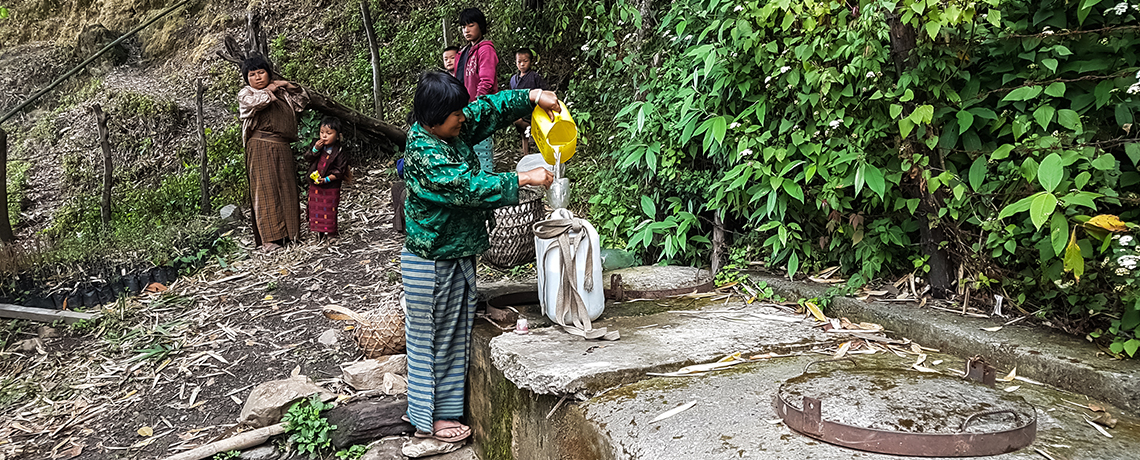
Readiness for the National Adaptation Plan Process in Ecuador
Ecuador faces significant development challenges due to prevailing social, economic, and environmental conditions. The country’s vulnerability to the impacts of climate change, coupled with limited conditions for effectively integrating climate change adaptation into policies and development plans at various levels, poses a significant obstacle to progress.
Anticipated impacts include biodiversity loss, water system susceptibility, agricultural production reduction, public health challenges, and risks to infrastructure and human settlements. Climate change also exacerbates existing inequalities, especially impacting women in productive activities, and contributes to gender-based violence. Addressing these challenges is essential for Ecuador’s sustainable development and resilience.
With the support of the ‘Green Climate Fund Readiness and Preparatory Support for National Adaptation Plan in Ecuador’ project, the Government of Ecuador developed a National Adaptation Plan (NAP) constituting the basis for adaptation management at the national level, in accordance with the National Climate Change Strategy.
Development methodologies, tools, indicators, policies, capacity-building programs and studies were foreseen to create the enabling conditions for the reduction of vulnerability and climate risk in six sectors prioritized for adaptation: Water Heritage; Food Sovereignty, Agriculture, Livestock, Aquaculture and Fisheries; Natural Heritage; Health; Productive and Strategic Sectors; and Human Settlements, as well as new or ongoing programs and projects in those sectors.
Aligned with Ecuador’s Constitution and National Development Plan, the project addressed gaps and needs identified during the NAP proposal phase. It followed the guidance of the Least Developed Countries Expert Group (LEG) Technical Guidelines on NAP, focusing on improving climate projections, enhancing institutional capacities, providing training, designing measurement and verification mechanisms, and formulating strategies for financing and sustainability. The project, implemented by UNDP with the Ministry of Environment as the National Designated Authority (NDA), aimed to facilitate the integration of climate change adaptation into development planning at various levels.
The National Adaptation Plan Project in Ecuador (PLANACC) was aligned with the Constitution of Ecuador, reflecting the state's commitment to adopting measures in response to climate change and protecting populations at risk. The project also aligned with the National Strategy for Climate Change 2012-2025 and Ecuador’s Nationally Determined Contribution (2020-2025). Likewise, the Organic Code of the Environment (2018) and its Regulations (2019) determined the National Adaptation Plan (NAP) as a key instrument for climate action that enables the implementation of the National Climate Change Strategy 2012-2025.
In addition to the implementing partner, the Ministry of Environment, Water and Ecological Transition, project partners included the National Planning Secretariat and the sectoral ministries providing technical and political support related to development planning.
The PLANACC Project served as the instrument for creating the necessary conditions for climate change adaptation in the country, leading to the formulation of the NAP as both a public policy document and a management tool.
The project enabled the Government of Ecuador to contribute to the creation and strengthening of technical capacities (individual and institutional) to facilitate the integration of climate change adaptation into the central and local government's development planning and budget processes. The resources have also enabled the generation of climate information with better resolution and scale, as well as assessments of vulnerability and climate risks at sectoral, territorial, and local levels. In addition, the funds allowed for the design of technical tools and instruments (guidelines, standards, strategies, etc.) to guide the integration of climate change adaptation into development planning and enable the dissemination of results. The project also supported the formulation of financing strategies.
Key results:
The project focused on generating technical information and creating the enabling conditions that allowed for the design of the National Adaptation Plan, while also strengthening the institutional capacities of sectoral entities and local governments on adaptation management, as listed below. The NAP (2023-2027) was published by the UNFCCC in March 2023.
Datasets:
- Updated national climate projections and other relevant climate studies.
- Backfilling, updating, and homogenization of official hydrometeorological data.
- Generation of lines and sub-lines of research on climate change (as part of a National Research Agenda).
- Numerical model of the wave dynamics on the Ecuadorian coast.
Guidelines and technical studies:
- NAP (2023-2027) submitted and approved at the national level.
- Six sectoral climate risk analyses (one for each prioritized adaptation sector).
- Portfolio of conservation and recovery practices for rural production land that are resilient to climate change.
- Several guidelines to integrate climate change adaptation into development planning processes, including risk management in Human Settlements.
- Methodologies for sectoral climate risk assessments, applying impact modeling for the identification of biophysical impacts.
- Design and implementation of the methodology for the adaptation component of the 1st NDC Implementation Plan.
Political instruments:
- Integration of the climate change adaptation variable into Ecuador's Wetlands Action Plan
- Update of the management plan for the Ecological Reserve “Los Ilinizas”, including the variable of adaptation to climate change.
- Design of the implementation strategy for prioritized adaptation actions as part of the NDC Implementation Plan- adaptation component.
- Generation of technical, scientific, and regulatory tools & instruments, useful for the CCA management.
Capacity Building Products and Processes:
- Design of a Toolbox to integrate climate change into development plans and territorial planning at subnational level and complementary training program, training more than 1000.
- Design of a MOOC about fire management and climate change adaptation and conducted complementary training workshops.
- Conducted workshops on climate migration and its impact on women and children: needs, challenges, and recommendations for action.
- Implementation of virtual tools and face-to-face training courses to strengthen professional skills of 1,200 technicians.
- Synergies created and technical support provided to national and regional climate change projects.
- Provision of technical assistance addressed to public research institutes & universities (INOCAR, INAMHI and IKIAM)./li>
Gender-responsive instruments:
- Development of a Wikipedia on gender and climate change adaptation (included in the Adaptation platform).
- Database of good adaptation practices with a gender perspective.
- Inventory of shortcomings and gaps of the social, economic, and environmental information using a gender-responsive focus to prepare assessments of climate risk in the prioritized sectors for climate change adaptation.
- Provision of technical assistance and training for integrating gender approach in adaptation processes.
Communication:
- Creation of the first virtual adaptation repository platform (including newsletters, courses, information on initiatives, and NAP data).
- Communication and Awareness-Raising Strategy to integrate climate change adaptation into development planning processes.
- Generation of recreational tools for raising awareness and training girls, boys, and adolescents on CCA.
- Development of a contest of illustrated stories for children on climate change and implementation of an exhibition at the Interactive Science Museum. Until 02/02/2023 more than 15,000 visitors were received.
Lessons learned
The NAP process in Ecuador yielded valuable lessons and best practices. The utilization of innovative biophysical impact models for sectoral climate risk analyses proved to be a complex and time-consuming endeavor. Moreover, the socialization and participatory construction of the NAP demanded meticulous planning, development, and adherence to official communication and dissemination guidelines.
Adaptation planning, based on the outcomes of comprehensive climate risk analyses, ensured the availability of reliable information for decision-makers and technicians. Crucially, the empowerment of the National Designated Authority (NDA), the Ministry of Environment, played a pivotal role in sustaining the continuity of the NAP process. Actively involving relevant stakeholders not only empowered them with the results achieved during the NAP formulation phase but also fostered commitment to planned adaptation actions.
Furthermore, the generation of studies, regulations, and technical tools for CCA needs alignment with national, sectoral, and local needs, with an emphasis on flexibility to accommodate changes in regulations, sectoral policies, and the composition of institutional technical teams.
Output 1: National mandate, strategy and steering mechanisms are in place and gaps are assessed and addressed.
Output 2: Preparatory elements for the NAP are in place to develop a knowledge base and formulate the NAP.
Output 3: NAP implementation is facilitated.
Output 4: Mechanisms for reporting, monitoring and review of NAPs and adaptation progress in place.
Output 5: Funding strategy for the NAP and climate change adaptation is available.
Ministerio del Ambiente presentó oficialmente el Plan Nacional de Adaptación al Cambio Climático (2023,Ministry of Environment, Water, and transition)
Los gobiernos provinciales aportan a la construcción del Plan Nacional de Adaptación al Cambio Climático (2023, ConGoPE)
Scientific dissemination, a key pillar for understanding climate change
Updating climate projections, a comprehensive process
Adaptation to climate change is possible by promoting capacity building processes
The country's higher education has a new master's degree in climate change
The country's higher education has a new master's degree in climate change
Talking about climate change from different perspectives of communication
Climate migration, time to join forces
Advancing adaptation and gender equality in Ecuador (also on Exposure)
Development of a virtual skills course focused on adaptation to climate change
Ecuador presented the results of the report of the Intergovernmental Panel on Climate Change
Updating climate projections, a comprehensive process
Ministry promotes illustrated story contest for children on climate change
Technicians are trained in numerical model to predict floods on the coasts of Ecuador
Ministry presented the first digital platform for adaptation to climate change in the country

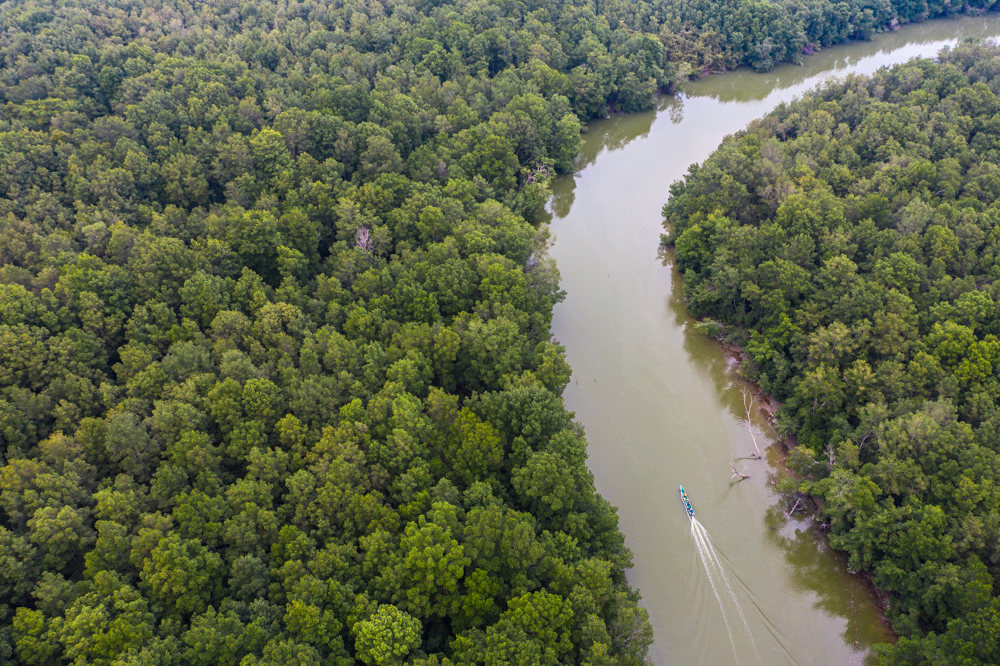
Enhancing Research and Policy Linkages to Advance National Adaptation Planning in Guinea
The project helped Guinea to increase its capacity to adapt to climate change impacts by strengthening linkages between research policy, mainstreaming climate change adaptation into sectoral and local planning and budgeting, and advancing national funding mechanisms and private sector engagement. The project addressed the main barriers that were identified during an earlier stocktaking exercise, including the lack of links between research and policymaking, weak measurement, evaluation and funding mechanisms, and insufficient private sector engagement in adaptation efforts.
The main objective of the project “Enhancing research and policy linkages to advance National Adaptation Planning in Guinea” was to increase Guinea’s adaptive capacity to cope with climate change impacts. The project established research to support informed decision-making and capture opportunities that arise both from public funding and the private sector.
Guinea is experiencing negative socio-economic impacts of climate change due to its exposure to sea level rise, droughts, and flooding. Its Nationally Determined Contribution (NDC), submitted in 2015 and revised in 2021, outlines climate change adaptation priorities, such as the preservation and restoration of water resources, protection of ecosystems particularly in coastal zones, and ensuring food security of rural communities.
Based on stakeholder consultations and stocktaking conducted in 2016 and 2018, the main barriers to climate change adaptation mainstreaming and financing were identified as (1) the absence of links connecting research to policy to inform decision-making processes; (2) weaknesses in and/or fragmentation of existing coordination, monitoring & evaluation (M&E), and funding mechanisms; (3) the absence of adaptation in the Planning-Programming-Budgeting-Monitoring and Evaluation (PPBSE) procedures; and (4) lack of private sector involvement in the adaptation landscape.
The project aims to remove these barriers by achieving the following objectives under the three main outcomes:
1. Research-policy linkages and knowledgebase are strengthened to inform adaptation planning and decision-making:
- Establish research-policy linkages to support the NAP (National Adaptation Plan) formulation and implementation;
- Develop a climate risks and vulnerability evidence base that informs the identification and prioritization of adaptation options in the sectors of agriculture, livestock, and forestry.
2. Climate change adaptation mainstreaming is facilitated by reinforcing coordination and M&E mechanisms:
- Operationalize a sustained and suitable coordination mechanism to support mid and long-term adaptation;
- Enhance adaptation mainstreaming into sectoral and local planning and budgeting;
- Establish adaptation M&E mechanisms in adherence with the existing national M&E system.
3. A national funding mechanism and private sector engagement are expanded to support adaptation financing:
- Support the Environmental Safeguard Fund (FSE) mechanism to raise awareness on funding sources and expand mandate for the financing of adaptation actions;
- Enhance the mining sector’s engagement on adaptation and climate financing.
Furthermore, a follow-up project was proposed to fill gaps identified through this phase and develop Guinea’s NAP document. The results of the current project have informed the proposal, consolidating existing climate risks and vulnerability assessments and prioritization of adaptation options in the priority sectors of agriculture, livestock, forestry, coastal and water resources. The planned second phase will further consider promoting sustainable cities, clean cities, and blue economy for which the national strategy is currently being developed.
In addition to the main project implementing partner, the Ministry of Environment, Water and Forests, other project partners included the Ministry of Economy and Finance (MEF), National Directorate of the Environment (DNE)/current National Directorate of Pollution, Nuisance and Climate Change (DNPNCC), sectoral Strategy and Development Offices (BSD), the various research institutes, the Center for Observation, Monitoring and Environmental Information (COSIE), the National Institute of Statistics (INS), the Fund for the Environment and Natural Capital (FECN), the Bauxite Environment Network (REB), Guinea-Ecology, civil society organizations and municipalities.
Project results
Activities under Outcome 1 led to the development and validation of key documents, including those for the Research-Policy Working Group (RPWG), Environmental Research and Climate Change Plan, and Updated Climate Projections Based on Appropriate Models (AR5 RCP). An interim report on vulnerability analysis in lower, middle, and upper Guinea was developed, and activities focused on setting up and running the RPWG team and prioritizing adaptation options in key sectors such as agriculture, livestock, forestry, and coastal and water resources. A Climate Risks and Vulnerability Assessment (CRVA) report was completed, including training modules used to train representatives from sectoral ministerial departments. This included strengthening the capacities of the national CRVA team to collect information on the impacts of climate change on key sectors in three of the four natural regions of Guinea. A workshop was conducted to prioritize adaptation options for key sectors.
Under Outcome 2, an operational manual was created for the National Committee on Climate Change (CNCC), featuring tools like a project monitoring tool, multi-year CNCC work plan, climate action monitoring system, management chart, and reporting system. A monitoring and evaluation framework for climate change adaptation, aligned with the national monitoring and evaluation system (DISE) of the National Plan for Economic and Social Development (PNDES), was established. Capacity-building sessions were conducted for government officials on integrating adaptation into the DISE. Additionally, studies focused on creating a sustainable coordination mechanism to support medium and long-term adaptation and updating climate models and projections, with corresponding training for managers. Data was collected and improved through a national stakeholder workshop. Furthermore, discussions with the National Institute of Statistics (INS) aimed to progress a partnership agreement for updating the statistical yearbook using the monitoring and evaluation framework. Technical guidelines were also developed to integrate climate change adaptation into sectoral planning and budgeting.
Outcome 3 focused on supporting the Environment and Natural Capital Fund (FECN) and the Bauxite Environment Network (REB). Discussions led to the finalization of terms of reference for activities, including conducting and validating a study on potential funding sources for the FECN and developing a strategic plan. The FECN mechanism was supported to raise awareness of funding sources and expand the mandate for financing adaptation actions. The project will also support the implementation of the REB 2024-2025 action plan to facilitate the private sector's commitment to adapting to climate change. Moreover, efforts were made to enhance the mining sector's engagement in adaptation and climate financing.
Outcome 1: Research-policy linkages and knowledge base are strengthened to inform adaptation planning and decision-making.
Outcome 2: Climate change adaptation mainstreaming is facilitated by reinforcing coordination and monitoring and evaluation mechanisms.
Outcome 3: A national funding mechanism and private sector engagement are expanded to increase climate change adaptation financing.
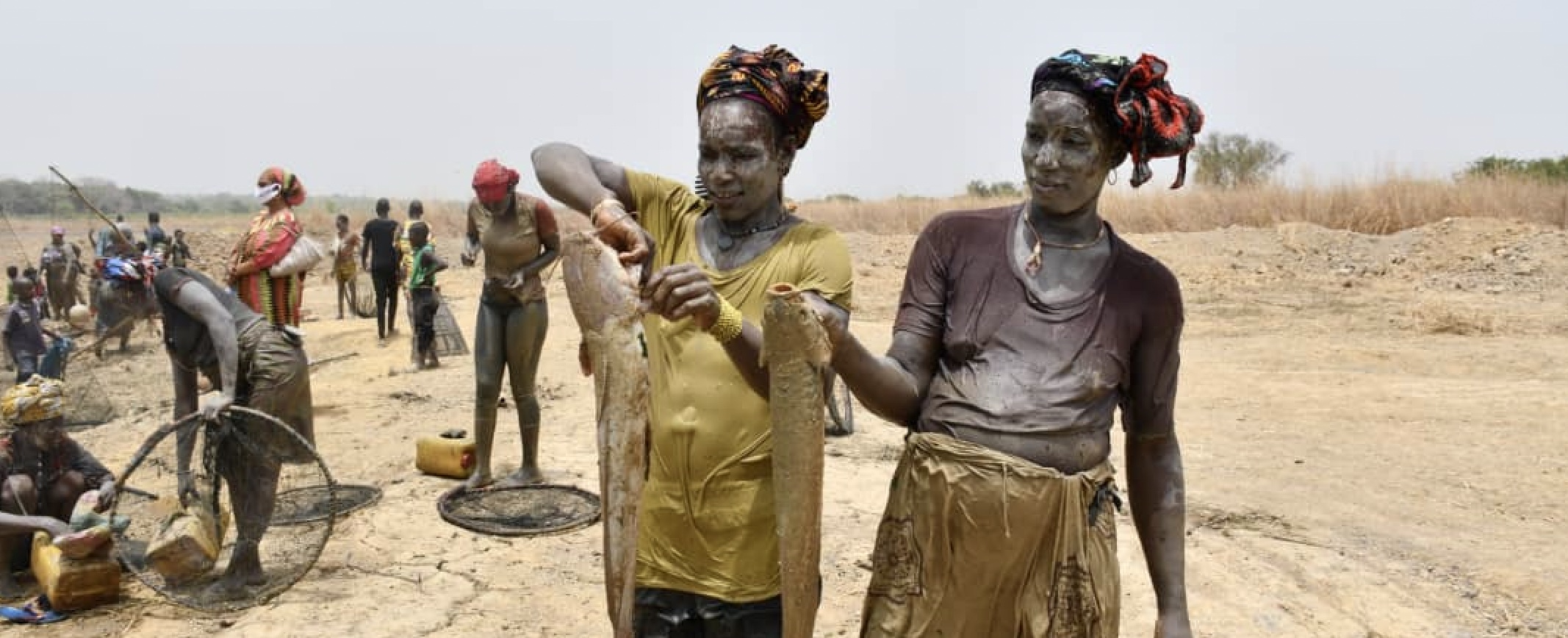
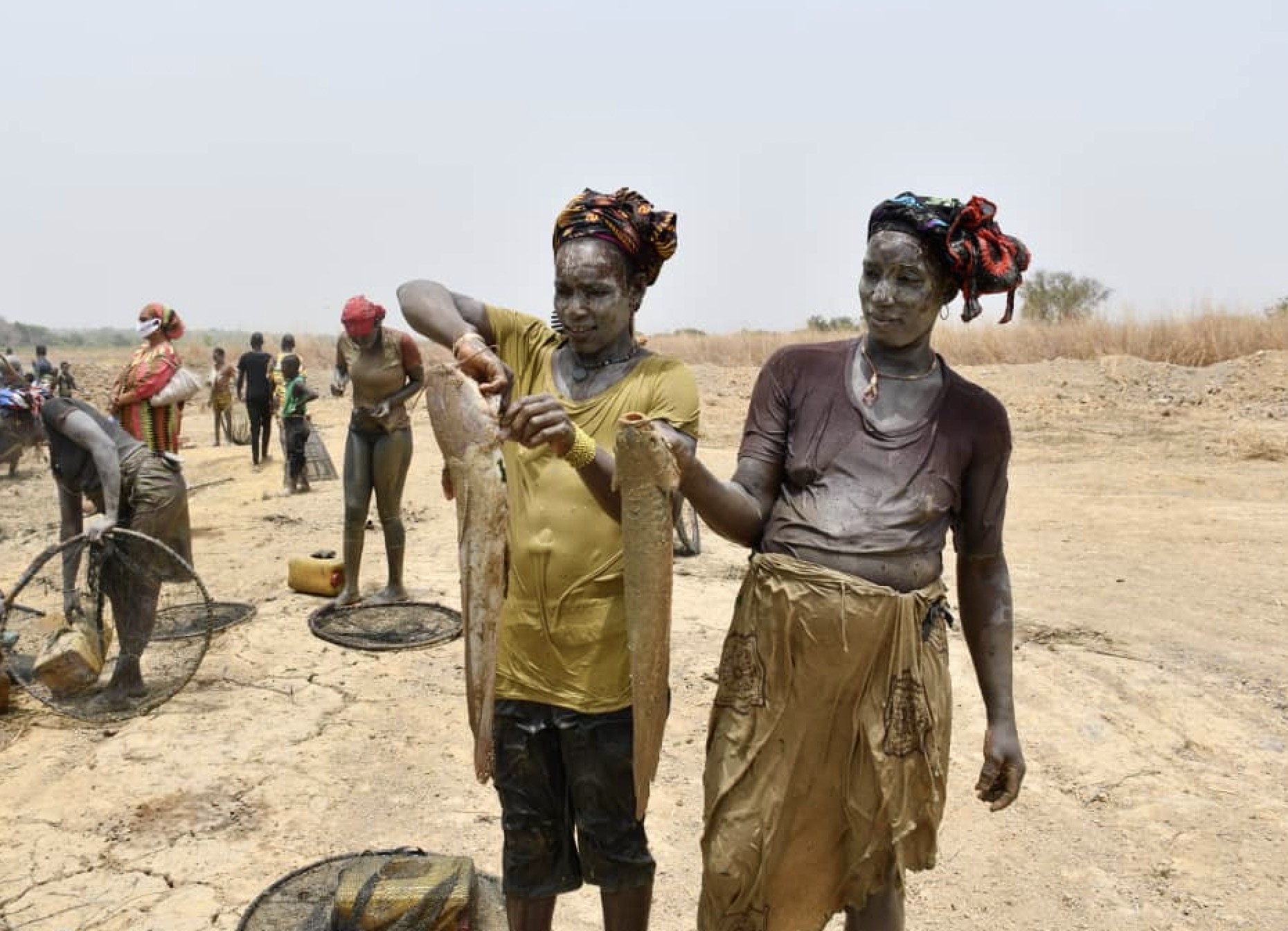
Integrating Climate Change Risks into National Development Planning Processes in Haiti
The project sought to strengthen institutional and technical capacities in Haiti to iteratively develop a National Adaptation Plan (NAP). Additionally, it aimed to integrate climate change adaptation into national and sub-national coordination, planning, and budgeting processes. This objective was achieved by advancing existing frameworks and systems, enhancing the capacities of various stakeholders to effectively contribute to the process, and establishing a mechanism to sustain the NAP process beyond this project.
Funded by the Green Climate Fund (GCF) Readiness Programme, the "Integrating climate change risks into national development planning processes in Haiti" project supported the Government of Haiti in strengthening institutional and technical capacities for iterative development of the National Adaptation Plan (NAP). This included integrating climate change adaptation into national planning and budgeting processes.
The project built on lessons from the National Adaptation Programme of Action (NAPA) implementation, as well as complementary activities currently underway in Haiti to avoid duplication of efforts. By integrating climate change adaptation into development plans, the project sought to align inclusive climate change adaptation priorities with the country’s visionary Strategic Development Plan (PSDH), National Land Use Plan (SNAT) and Disaster Risk Reduction Plan and Strategy.
As the only Least Developed Country (LDC) in the Caribbean region, Haiti’s primary economic sectors (i.e., agriculture, forestry, and fishing) are heavily affected by climatic events. As of 2023, nearly 59 percent of Haiti’s population lives below the poverty line, many of those people living in extreme poverty. According to the World Bank’s Climate Change Overview Country Summary (2022), political violence, economic imbalance, and population pressure have led to extreme environmental degradation in Haiti, with an estimated 98 percent of forests cleared for fuel. These destabilizing forces have left most Haitians extremely vulnerable to natural hazards.
Haiti has embarked on many initiatives to strengthen its resilience to climate change. However, fragmented policies and data, weak technical capacity, and inadequate climate financing, among others, have hampered the country’s efforts to plan effectively and iteratively for medium-to-long-term climate risks in its development planning and budgeting.
The project was informed by stakeholder consultations and stocktaking of existing initiatives, policies, and strategies in Haiti that were conducted by the National Adaptation Plan Global Support Programme in 2017, which resulted in an action plan to implement the NAP. The Stocktaking Report highlighted limitations and gaps, including insufficient technical and institutional capacity to effectively coordinate and implement climate change adaptation measures, scattered data and information-sharing on climate change impacts and adaptation interventions, limited capacity to monitor climate change adaptation and inform policies, and inadequate budget allocations. These served as the basis for the project activities that were later confirmed by stakeholders.
The project is expected to deliver the following results under the three key outcomes:
- Capacities of the Technical Working Group, particularly MDE (Ministry of Environment) and MCPE (Ministry of Planning), to steer the climate change coordination and integration process are developed;
- Institutional barriers to the integration of climate change into development planning and policies are reviewed and key stakeholders are sensitized to climate change adaptation and development linkages;
- Mechanisms for regularly updating and reviewing adaptation are strengthened and feed into the iterative adaptation planning process;
- Haiti's National Adaptation Plan is developed;
- A system for economic analysis and appraisal of adaptation options is established and adaptation priority interventions are integrated into the SNAT, PSDH and PNGRD;
- Universities and educational institutions are capacitated to support adaptation initiatives and the NAP process;
- Financing and Investment Strategy for the NAP is developed through a gender responsive consultative process;
- Private sector engagement in climate change adaptation is strengthened.
Project results
Despite socio-political challenges, the project advanced the NAP process in Haiti, focusing on enhancing national institutional capacities. The NAP was developed and validated by both the Ministry of Environment (MDE) and the Ministry of Planning (MCPE). The NAP document was presented at COP 27 in Egypt, the NAP Expo 2022 in Botswana, and at the launch of the National Committee on Climate Change (NCCC), providing platforms for experience-sharing and networking with potential partners. Subsequently, the NAP was published by UNFCCC in January 2023.
The project has produced strategic documents and tools, including a gender integration strategy, an exploratory report on private sector engagement in climate change adaptation, and a training mission for actors in planning and budgeting for adaptation. A NAP financing and investment strategy was developed through broad consultations with diverse stakeholders, including women’s organizations, while the communication strategy for the NAP process was validated and disseminated nationwide. An assessment of the regulatory framework and the vulnerabilities of priority sectors, such as health, agrobiodiversity, and water resources, was also conducted.
Other activities included technical working group meetings from sectorial ministries to strengthen capacity, ongoing training on climate information and adaptation integration, and stakeholder development planning and budgeting. Adaptation criteria were integrated into the Haiti Public Investment Program, while other efforts focused on incorporating SDG-aligned adaptation indicators into the national MRV system, creating new data layers with the Ministry of Environment, and organizing workshops on monitoring and evaluation, including a workshop on adaptation practices. Additionally, research programs for priority sectors with two Haitian universities were finalized.
Various initiatives aimed at revising strategic documents were supported, including the Nationally Determined Contributions (NDC), the development of an operational plan for the PNGRD and the reinforcement of the EIS-Haiti database for the monitoring of climate indicators, among others. Additional activities involved formulating addendums for the PSDH and SNAT, developing project concept notes, and promoting private sector participation in adaptation.
Several good practices and lessons learned from adaptation measures were compiled to promote successful approaches and were incorporated into the Environmental Information System platform. Moreover, collaboration with partners and stakeholders allowed the project to continue the implementation and validation of deliverables while developing synergies between climate change adaptation actions in the field.
Outcome 1: The coordination mechanism for multi-sectoral adaptation planning and implementation is strengthened at different levels
Outcome 2: The NAP is compiled with a strong evidence base for adaptation planning and priorities are integrated into the Strategic Development Plan and the Disaster Risk Reduction Plan and Strategy
Outcome 3: A financing framework for climate change adaptation action in the medium-to long-term is established.
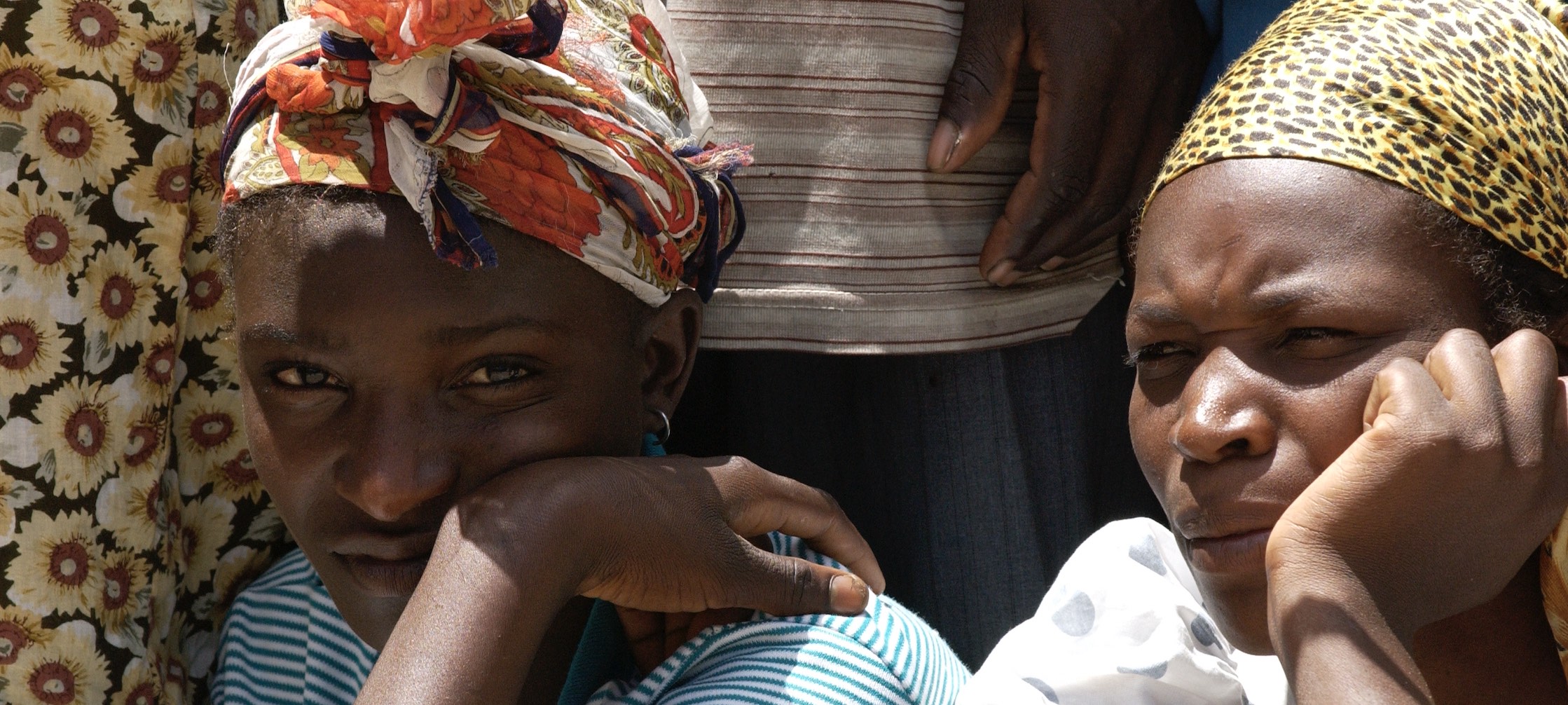
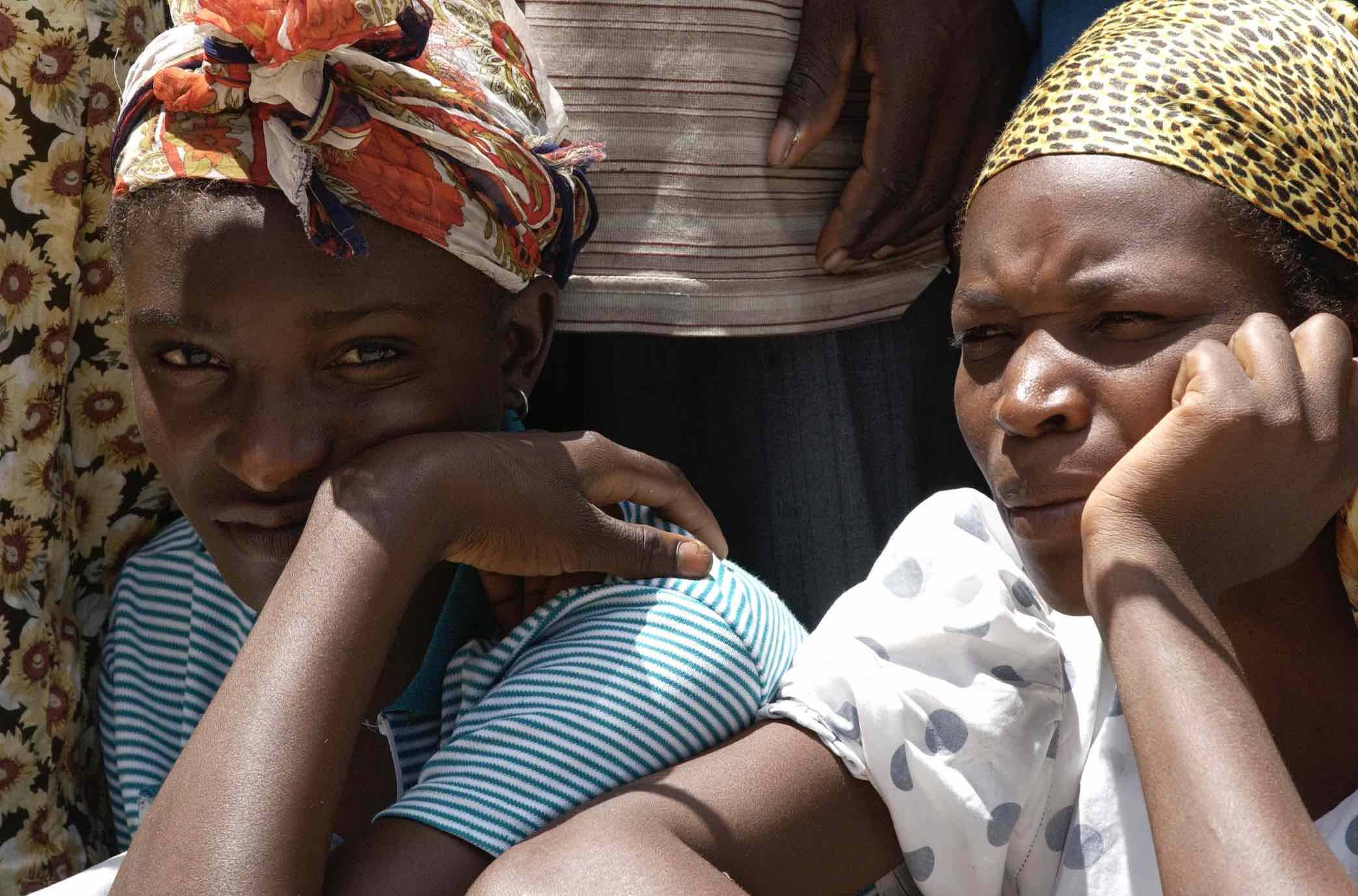
Accelerating Climate Change Adaptation Investment Planning to Enhance Resilience in Indonesia
The project supports the implementation and monitoring of the National Action Plan for Climate Change Adaptation in Indonesia (RAN-API). Operating at the national and sub-national levels, national-level activities are updating and strengthening the National Action Plan for Climate Change Adaptation (RAN-API) and enhancing the vulnerability monitoring system (SIDIK), incorporating a gender-responsive approach. Meanwhile, local activities are concentrating on risk-assessments and landscape-based adaptation for the archipelagic island site of Wakatobi. The project is focused on addressing challenges, including weak coordination and cross-sectoral information sharing, underrepresentation of vulnerable groups, and lack of adaptation criteria application in budget tagging.
The project “Accelerating Climate Change Adaptation Investment Planning to Enhance Resilience in Indonesia” addresses the barriers to adaptation planning and ensures that the National Action Plan for Climate Change Adaptation (RAN-API) is well coordinated, implemented, and monitored. The project has both a national and sub-national dimension: at the national level, it supports the next update of the RAN-API and enhances relevant assessment and budgeting systems. At the sub-national level, the project enhances landscape-based adaptation planning approaches in the archipelagic island site of Wakatobi that may be scaled up in the future. The Wakatobi District was chosen as an appropriate piloting site due to its manageable size, coastal location, and archipelagic landscape. As a marine national park, it also presents the opportunity to explore and develop ecotourism as a potential adaptation option.
Climate change impacts are already evident across various economic sectors in Indonesia. The most dominant disasters in Indonesia are floods, windstorms, landslides, and droughts, and these events are expected to be further exacerbated by climate change. The NDC (submitted in 2016 and updated in 2021, with an enhanced version released in 2022) has identified both mitigation and adaptation priorities to address these threats. Climate change adaptation has already been integrated into the country’s development planning through the National Action Plan for Climate Change Adaptation (RAN-API 2013–2025) and the fourth Medium Term Development Plan of Indonesia (RPJMN 2020-2024). While Indonesia’s adaptation planning process is considerably developed, several barriers to enhanced adaptation planning and implementation of adaptation options remain. These include a lack of effective coordination, the absence of an updated adaptation plan, inadequate focus on identifying adaptation options in vulnerable areas, unavailability of detailed information and vulnerability assessments for adaptation planning at national and sub-national levels, and challenges in tracking adaptation-related investments at national and sub-national levels. In addition, the lack of capacity for adaptation planning and budgeting is a cross-cutting issue for national ministries and sub-national governance structures.
The project aims at delivering the following results under the three main outcomes:
- RAN-API coordination and implementation strengthened;
- Legal standing for RAN-API to ensure planning and budgeting related to climate change adaptation in place;
- The RAN-API updated, including the formulation of a comprehensive financing strategy;
- Climate change budgeting system for adaptation enhanced.
- SIDIK enhanced, gender-responsive climate change risk assessment process developed;
- Existing science base for RAN-API reviewed and improved;
- Stakeholder capacity built for climate risk and impact assessment, and identifying suitable adaptation measures.
- Government staff in Wakatobi trained on gender-responsive climate risk assessments;
- Climate risk assessment for Wakatobi islands conducted using landscape-based adaptation;
- Government staff in Wakatobi trained on gender-responsive adaptation planning and budget tagging;
- A gender-responsive adaptation planning and budget tagging system developed and implemented in Wakatobi.
Outcome 1: The National Action Plan for Climate Change Adaptation (RAN-API) updated and climate change adaptation integrated in budgeting systems.
Outcome 2: Vulnerability and risk assessment process (SIDIK) enhanced at the national level for sectors identified in the adaptation component of the Nationally Determined Contributions (NDC).
Outcome 3: Integrated risk assessment and landscape-based adaptation planning and budgeting established in Wakatobi.
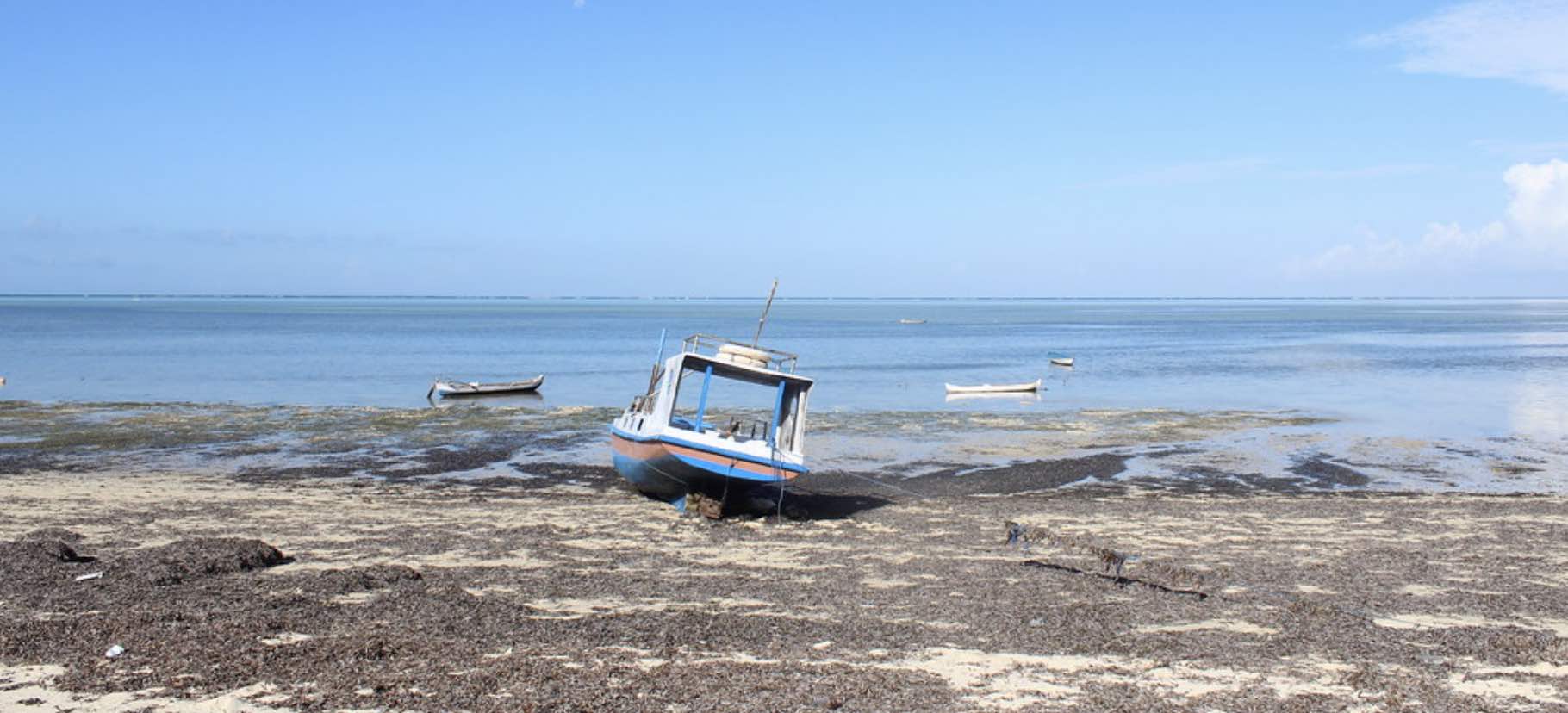
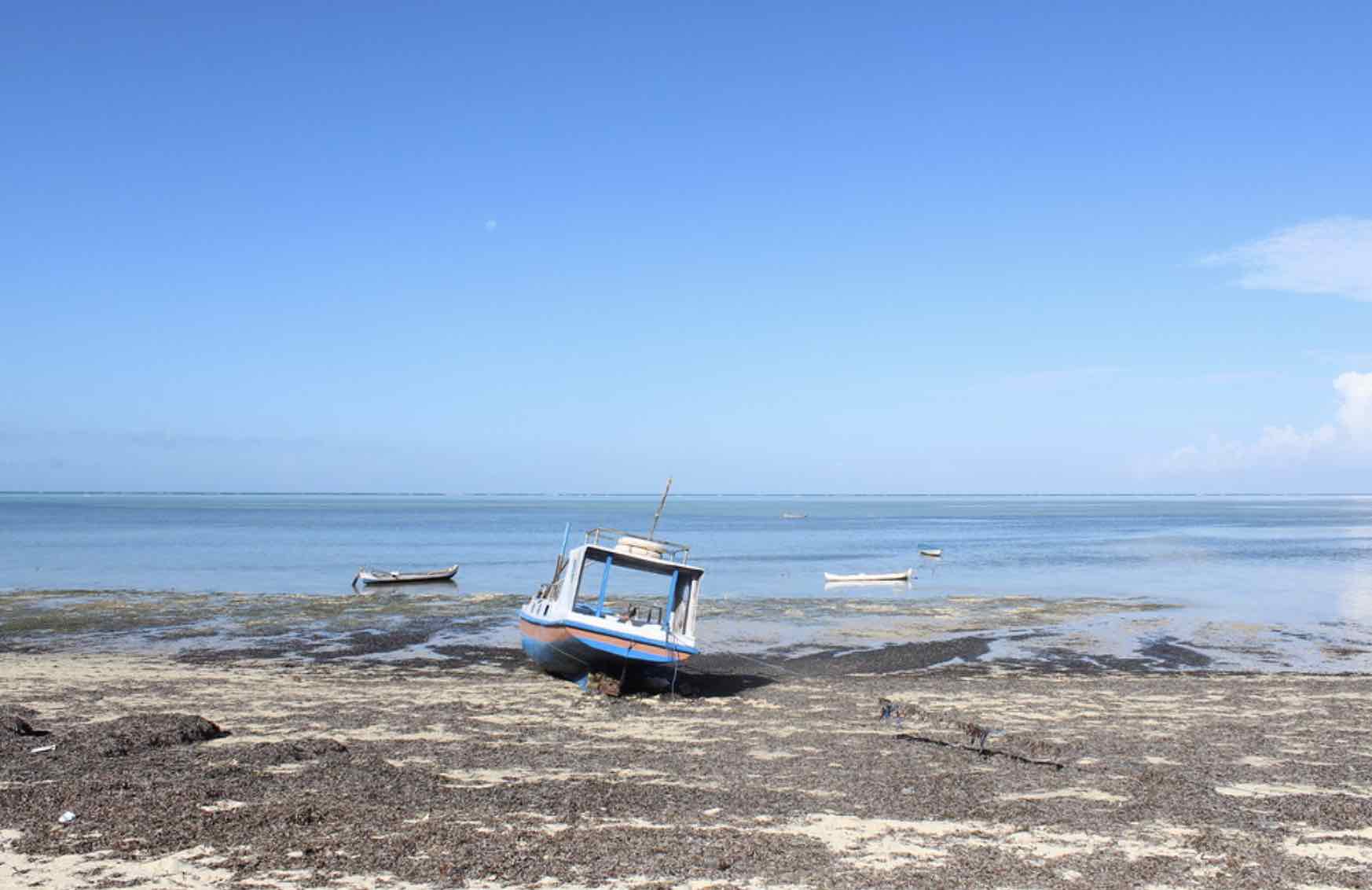
Advance the National Adaptation Plans process for medium term investment planning in climate-sensitive sectors and coastal areas in Liberia
The project’s objective was to support the Government of Liberia in advancing its National Adaptation Plan (NAP) process in climate-sensitive sectors: agriculture, energy, waste management, forestry, health, and coastal areas. The project was a first of its kind, approved by the Green Climate Fund (GCF) Board in November 2016 prior to the introduction of the GCF Readiness guidebook. The project informed the introduction and subsequent evolution of the guidelines on adaptation planning in Liberia.
Significant outcomes and outputs were achieved across four key areas. In Outcome 1, institutional frameworks were strengthened, and a climate change strategy was developed. Outcome 2 focused on expanding the knowledge base through risk assessments, economic studies, and a knowledge-sharing platform. Outcome 3 enhanced capacity for mainstreaming climate change into planning and budgeting, including technical guidelines and capacity-building programs. Lastly, Outcome 4 supported the scaling up of prioritized adaptation investments, identified policy options, and fostered public-private partnerships. These efforts contributed to Liberia's National Adaptation Plan, promoting resilience and sustainability in the face of climate change.
The GCF-funded project "Advance the NAPs process for medium-term investment planning in climate-sensitive sectors (i.e. agriculture, energy, waste management, forestry and health) and coastal areas in Liberia" aimed to strengthen institutional frameworks and coordination for the implementation of the NAP process, expand the knowledge base for scaling up adaptation, build capacity for mainstreaming climate change adaptation into planning and budgeting processes and systems, and formulate financing mechanisms for scaling-up adaptation.
In addition to the project delivery partner, the Environment Protection Agency and the National Climate Change Secretariat, other key partners included the Ministry of Finance and Development Planning, Ministry of Agriculture, National Disaster Management Agency, University of Liberia, Liberia Maritime Authority, Bureau of National Fisheries, Liberia National Department of Meteorology, Ministry of Mines & Energy, Ministry of Health, Liberia Institute of Statistics and Geo-Information Services, and the University of Liberia.
Liberia, like other developing countries, especially Least Developed Countries (LDCs), is vulnerable to the impacts of climate change. Despite having a low carbon footprint, the country anticipates severe consequences in key sectors, including agriculture, fisheries, forests, energy production related to the availability of water resources, coastal areas, and health. Approximately 70% of the population relies on agriculture for their livelihoods, with rural areas experiencing up to 80% vulnerability to food insecurity, according to the Environmental Protection Agency. Coastal regions, spanning 350 miles, face challenges from ongoing coastal erosion, sea level rise, storms, precipitation changes, and warmer ocean temperatures. Health risks include heightened vulnerability to diseases like malaria, cholera, and diarrheal diseases. Moreover, climate change may adversely affect hydroelectric generation from the Mount Coffee hydropower plant.
Liberia initiated its NAP process in 2015, establishing a roadmap in consultation with key stakeholders. This roadmap, grounded in the evaluation of existing climate initiatives and identification of gaps and capacity needs, serves as a guide for the short, medium, and long-term implementation of the NAP process in Liberia.
Key Project Results
Liberia submitted its NAP to the UNFCCC in 2021, with the project providing support in its development, including organizing a multi-sectoral working group to review and validate the final document. The project also achieved the following:
- Developed a comprehensive Climate Change Policy and Response Strategy.
- Supported the ratification of the Paris Agreement.
- Established the School of Environment and Climate Change at the University of Liberia, offering four graduate programs.
- Assessed climate change impacts on gender.
- Developed tools for mainstreaming climate change into programmatic activities.
- Conducted climate vulnerability/economic assessments and developed adaptation plans for key sectors.
- Implemented financial management and capacity support, including an enterprise resource planning system for the Environmental Protection Agency (EPA).
- Supported the national disaster risk assessment, development of the National Disaster Risk Reduction strategy, and launched the disaster database platform.
- Integrated economic assessments of adaptation studies in key sectors and developed a policy paper highlighting economic impacts of climate change in Liberia.
- Deployed 25 rainfall stations across the country to support the early warning system.
- Conducted capacity building for effective appraisal of investment priorities in sector ministries and mainstreamed climate change adaptation in sector strategies and plans.
- Established programs to inform and learn from the private sector on identifying climate variability and managing climate change (including setting up a private sector climate action alliance - Private Sector Working Group on Climate Change Adaptation Formed)
- Conducted policy analysis for future financing instruments/options for adaptation, including identifying alternative funding sources.
- Developed information products to support the private sector, particularly micro, small, and medium enterprises, in integrating adaptation into their investment planning.
Outcome 1: Strengthening of Institutional Frameworks and coordination for the NAPs process.
In the latter part of 2020, key activities under this outcome focused on enhancing the financial management and operational capacity of the Environmental Protection Agency (EPA) and the Climate Change Secretariat. This involved the implementation of an enterprise resource planning system. Additionally, a video documentary was developed to catalog essential project results, featuring feedback from key stakeholders and partners. The aim is to document lessons learned, challenges, success stories, and illustrate the meaningful impact the project has had in supporting climate change adaptation planning in Liberia.
1.1 Climate change strategy and action plan for adaptation developed as part of the NAP process.
Adaptation strategies and action plans for agriculture, forestry, fisheries, and coastal areas have been developed. Additionally, a national climate change adaptation strategy and action plan have been produced and formally launched, including the publication of Liberia’s NAP (2020-2030) document.
1.2. Coordination and monitoring enhanced for climate change adaptation program development across sectors.
The project assisted the Environmental Protection Agency (EPA)/National Climate Change Secretariat (NCCS) by conducting a capacity assessment and providing training in financial management, procurement, human resources, and other operational capacities. Subsequently, an Enterprise Resource Planning (ERP) System was established. The aim is to enhance the EPA's capacity in budgeting, accounting, governance, funds flow, financial reporting, internal control systems, and auditing for funds accessed from both the national budget and external sources.
Outcome 2: Expansion of the knowledge base for scaling up adaptation.
Liberia has faced a shortage of scientific data on climate impacts, including limited knowledge of current climate variability and risks, as well as the absence of an early warning system. The project expanded the knowledge base for scaling up adaptation interventions through various activities. This includes conducting economic assessments of adaptation strategies to inform funding proposals and national policies. Climate vulnerability and risk assessments were carried out to establish an evidence base for research, planning, and implementing adaptation action plans. Additionally, a knowledge-sharing platform was developed to facilitate information exchange and collaboration.
2.1. Risk assessments and economic impact studies in climate sensitive sectors conducted and incorporated in official data systems.
The project conducted a climate vulnerability and risk assessment for several sectors, including coastal, agriculture, forestry, fisheries, energy, and health (ongoing). Simultaneously, awareness-raising initiatives with relevant stakeholders were undertaken.
2.2. Effective knowledge sharing platform as a resource for climate relevant planning established.
The project conducted a gap analysis and collaborated with relevant IT staff and an international consulting firm to develop a climate change knowledge management platform. This platform, hosted at http://ccksp.gnf.tf, aims to expand knowledge and build capacities within the Liberian government. It serves as a repository for climate change-related data and information and offers training programs for a diverse audience, including practitioners, students, policymakers, and advocates. The project conducted at least six training sessions for staff from sectors such as waste management, forestry, energy, health, agriculture, and coastal management.
2.3. Climate Change disasters-related database developed.
The project procured and supplied meteorology equipment, including 25 rain gauges, for the Meteorology Department. These rain gauges have been strategically installed nationwide to enhance the production and distribution of weather information to various users, including farmers and fishermen. In addition, six staff members from the Meteorology Department received training on the operation of the system, ensuring effective utilization of the equipment.
Outcome 3: Strengthened capacity for mainstreaming CCA into planning, and budgeting processes and systems.
The project supported the formulation of mechanisms for scaling up adaptation investments and addressing financial gaps through various activities. This included assessing economic impacts and opportunities arising from climate change.
3.1. Technical guidelines for the personnel of the Ministry of Finance & Development Planning and other relevant Ministries, to mainstream climate change into budgeting and planning processes incorporating gender disaggregated data.
The project developed technical guidelines for personnel at the Ministry of Finance & Development Planning (MFDP) and other relevant ministries. These guidelines are designed to facilitate the mainstreaming of climate change considerations into budgeting and planning processes. Additionally, training sessions were conducted to familiarize personnel from MFDP and other sectoral entities with the use of these guidelines.
3.2. Capacity building programs on implementing adaptation investments and strategies established.
The project conducted a capacity assessment and developed a three-year climate change capacity development plan for the EPA and key sectoral agencies. The University of Liberia initiated its graduate program in 2019, the "School of Environmental Studies and Climate Change (SESCC)," in partnership with the EPA and UNDP. The project facilitated the provision of climate change adaptation textbooks to the school and fostered a partnership between the University of Liberia and the Least Developed Countries Universities Consortium for Climate Change (LUCCC), promoting research, knowledge sharing, and education in climate change. Eleven government staff members completed international training in climate change adaptation in Israel, and a south-south exchange tour for policymakers on knowledge sharing was successfully completed.
3.3. Monitoring and reporting system to track adaptation investments and implementation.
The project developed a detailed design for tracking climate finance, reviewed by stakeholders. An IT firm was hired to support the creation of a climate finance tracking system, integrated with monitoring and evaluation (M&E) indicators, and training sessions on the climate-proofing tool were conducted for the EPA team and other stakeholders. The National Monitoring System was assessed, resulting in a report with recommendations for integration into the national financial reporting systems, incorporating tracking tools and criteria to estimate adaptation financing in Liberia.
Outcome 4: Mechanisms to support scaling up of prioritized adaptation investments and addressing of financial gaps.
Outcome 4 included policy analysis for future financing instruments and options for adaptation. Alternative funding sources, such as private and local funds, were identified. The project created information products to support private sector engagement, with a focus on micro, small, and medium enterprises, helping them integrate adaptation into their investment planning. Furthermore, the project supported the development of costed investment plans for the agricultural sector and coastal areas in collaboration with partners. It successfully identified and prioritized at least two bankable projects and developed strategies to encourage private investments in new technologies and foster public-private partnerships for implementing climate change adaptation interventions.
4.1. Sector and area based costed investment plans prepared for scaling up adaptation in agriculture and coastal areas that take into account climate change risks and opportunities.
The project successfully developed and validated adaptation options for priority sectors, including agriculture, forestry, coastal areas, waste management, energy, and fisheries. This included the preparation of two bankable adaptation projects (agriculture and forestry, mangroves and ecotourism) for multi-sector implementation.
4.2. Policy options for scaling up financing for adaptation investments identified and recommended.
The project developed specific climate finance advisory products, offering detailed information on the country's climate finance landscape, criteria, funding amounts, and eligibility requirements. Stakeholders underwent climate finance training to enhance their understanding of available financing options. The project's identification of additional financing windows beyond traditional sources provides Liberia with opportunities to expand its resource mobilization for climate change action.
4.2. Foster Public Private Partnerships (PPPs) to support adaptation investments.
The project facilitated the creation of a private sector platform and developed knowledge products to support climate change adaptation planning. This included capacity-building support to encourage private sector engagement in climate action and attract private finance through partnerships and other financing options. The establishment of the Liberia Private Sector Climate Change Alliance served as a platform for collaboration between the private sector, government, and other stakeholders on climate initiatives. Great enthusiasm exists within the private sector to engage the government upon the realization that climate change represents a serious risk to private investment.
Crisis to Action: Liberia’s national adaptation plan addresses climate change (2023)
Liberia: Government Launches Country’s National Adaption Plan (2021)
Private Sector Working Group On Climate Change Adaptation Formed (2020)
National Adaptation Plans Report: Lessons from Liberia (2019)
University of Liberia launches new degree program on Environmental Studies (2019)
Building effective climate governance in Liberia (2018)
Need for Collective Partnership to Avoid Natural Hazards Stressed (2018)
Liberia Faces Natural Hazards Threat, EPA, UNDP Warn (2018)
University of Liberia to Commence Environmental Studies Soon (2018)
Liberia: 51 Vulnerable Youth and Women Trained in Production of Energy Efficient Cook Stoves (2018)
Integrating gender in the mitigation of climate change (2018)
EPA, UNDP Hold SDGs Training in Nimba (2018)
Liberia Launches National Policy and Response Strategy on Climate Change (2018)
UNDP and partners sign agreement on graduate programme for environmental studies (2018)
Liberia set to launch National Policy and Response Strategy on Climate Change (2018)
UNDP Equips EPA Monitoring System (2018)
National Disaster Management Agency, UNDP-Liberia Conduct Training on National Disaster Readiness (2018)
Government, Partners Launch National Adaptation Plan of Liberia (2018)
Environment chief: Why we’re prioritizing climate governance in Liberia (2018)
Liberia receives first instalment of US$2.2 million GCF grant for climate adaptation (2015)
GCF approves first grants for National Adaptation Planning in Liberia and Nepal (2015)

Advance the National Adaptation Plans process for medium term investment planning in climate-sensitive sectors and coastal areas in Liberia
The project’s objective was to support the Government of Liberia in advancing its National Adaptation Plan (NAP) process in climate-sensitive sectors: agriculture, energy, waste management, forestry, health, and coastal areas. The project was a first of its kind, approved by the Green Climate Fund (GCF) Board in November 2016 prior to the introduction of the GCF Readiness guidebook. The project informed the introduction and subsequent evolution of the guidelines on adaptation planning in Liberia.
Significant outcomes and outputs were achieved across four key areas. In Outcome 1, institutional frameworks were strengthened, and a climate change strategy was developed. Outcome 2 focused on expanding the knowledge base through risk assessments, economic studies, and a knowledge-sharing platform. Outcome 3 enhanced capacity for mainstreaming climate change into planning and budgeting, including technical guidelines and capacity-building programs. Lastly, Outcome 4 supported the scaling up of prioritized adaptation investments, identified policy options, and fostered public-private partnerships. These efforts contributed to Liberia's National Adaptation Plan, promoting resilience and sustainability in the face of climate change.
The GCF-funded project "Advance the NAPs process for medium-term investment planning in climate-sensitive sectors (i.e. agriculture, energy, waste management, forestry and health) and coastal areas in Liberia" aimed to strengthen institutional frameworks and coordination for the implementation of the NAP process, expand the knowledge base for scaling up adaptation, build capacity for mainstreaming climate change adaptation into planning and budgeting processes and systems, and formulate financing mechanisms for scaling-up adaptation.
In addition to the project delivery partner, the Environment Protection Agency and the National Climate Change Secretariat, other key partners included the Ministry of Finance and Development Planning, Ministry of Agriculture, National Disaster Management Agency, University of Liberia, Liberia Maritime Authority, Bureau of National Fisheries, Liberia National Department of Meteorology, Ministry of Mines & Energy, Ministry of Health, Liberia Institute of Statistics and Geo-Information Services, and the University of Liberia.
Liberia, like other developing countries, especially Least Developed Countries (LDCs), is vulnerable to the impacts of climate change. Despite having a low carbon footprint, the country anticipates severe consequences in key sectors, including agriculture, fisheries, forests, energy production related to the availability of water resources, coastal areas, and health. Approximately 70% of the population relies on agriculture for their livelihoods, with rural areas experiencing up to 80% vulnerability to food insecurity, according to the Environmental Protection Agency. Coastal regions, spanning 350 miles, face challenges from ongoing coastal erosion, sea level rise, storms, precipitation changes, and warmer ocean temperatures. Health risks include heightened vulnerability to diseases like malaria, cholera, and diarrheal diseases. Moreover, climate change may adversely affect hydroelectric generation from the Mount Coffee hydropower plant.
Liberia initiated its NAP process in 2015, establishing a roadmap in consultation with key stakeholders. This roadmap, grounded in the evaluation of existing climate initiatives and identification of gaps and capacity needs, serves as a guide for the short, medium, and long-term implementation of the NAP process in Liberia.
Key Project Results
Liberia submitted its NAP to the UNFCCC in 2021, with the project providing support in its development, including organizing a multi-sectoral working group to review and validate the final document. The project also achieved the following:
- Developed a comprehensive Climate Change Policy and Response Strategy.
- Supported the ratification of the Paris Agreement.
- Established the School of Environment and Climate Change at the University of Liberia, offering four graduate programs.
- Assessed climate change impacts on gender.
- Developed tools for mainstreaming climate change into programmatic activities.
- Conducted climate vulnerability/economic assessments and developed adaptation plans for key sectors.
- Implemented financial management and capacity support, including an enterprise resource planning system for the Environmental Protection Agency (EPA).
- Supported the national disaster risk assessment, development of the National Disaster Risk Reduction strategy, and launched the disaster database platform.
- Integrated economic assessments of adaptation studies in key sectors and developed a policy paper highlighting economic impacts of climate change in Liberia.
- Deployed 25 rainfall stations across the country to support the early warning system.
- Conducted capacity building for effective appraisal of investment priorities in sector ministries and mainstreamed climate change adaptation in sector strategies and plans.
- Established programs to inform and learn from the private sector on identifying climate variability and managing climate change (including setting up a private sector climate action alliance - Private Sector Working Group on Climate Change Adaptation Formed)
- Conducted policy analysis for future financing instruments/options for adaptation, including identifying alternative funding sources.
- Developed information products to support the private sector, particularly micro, small, and medium enterprises, in integrating adaptation into their investment planning.
Outcome 1: Strengthening of Institutional Frameworks and coordination for the NAPs process.
In the latter part of 2020, key activities under this outcome focused on enhancing the financial management and operational capacity of the Environmental Protection Agency (EPA) and the Climate Change Secretariat. This involved the implementation of an enterprise resource planning system. Additionally, a video documentary was developed to catalog essential project results, featuring feedback from key stakeholders and partners. The aim is to document lessons learned, challenges, success stories, and illustrate the meaningful impact the project has had in supporting climate change adaptation planning in Liberia.
1.1 Climate change strategy and action plan for adaptation developed as part of the NAP process.
Adaptation strategies and action plans for agriculture, forestry, fisheries, and coastal areas have been developed. Additionally, a national climate change adaptation strategy and action plan have been produced and formally launched, including the publication of Liberia’s NAP (2020-2030) document.
1.2. Coordination and monitoring enhanced for climate change adaptation program development across sectors.
The project assisted the Environmental Protection Agency (EPA)/National Climate Change Secretariat (NCCS) by conducting a capacity assessment and providing training in financial management, procurement, human resources, and other operational capacities. Subsequently, an Enterprise Resource Planning (ERP) System was established. The aim is to enhance the EPA's capacity in budgeting, accounting, governance, funds flow, financial reporting, internal control systems, and auditing for funds accessed from both the national budget and external sources.
Outcome 2: Expansion of the knowledge base for scaling up adaptation.
Liberia has faced a shortage of scientific data on climate impacts, including limited knowledge of current climate variability and risks, as well as the absence of an early warning system. The project expanded the knowledge base for scaling up adaptation interventions through various activities. This includes conducting economic assessments of adaptation strategies to inform funding proposals and national policies. Climate vulnerability and risk assessments were carried out to establish an evidence base for research, planning, and implementing adaptation action plans. Additionally, a knowledge-sharing platform was developed to facilitate information exchange and collaboration.
2.1. Risk assessments and economic impact studies in climate sensitive sectors conducted and incorporated in official data systems.
The project conducted a climate vulnerability and risk assessment for several sectors, including coastal, agriculture, forestry, fisheries, energy, and health (ongoing). Simultaneously, awareness-raising initiatives with relevant stakeholders were undertaken.
2.2. Effective knowledge sharing platform as a resource for climate relevant planning established.
The project conducted a gap analysis and collaborated with relevant IT staff and an international consulting firm to develop a climate change knowledge management platform. This platform, hosted at http://ccksp.gnf.tf, aims to expand knowledge and build capacities within the Liberian government. It serves as a repository for climate change-related data and information and offers training programs for a diverse audience, including practitioners, students, policymakers, and advocates. The project conducted at least six training sessions for staff from sectors such as waste management, forestry, energy, health, agriculture, and coastal management.
2.3. Climate Change disasters-related database developed.
The project procured and supplied meteorology equipment, including 25 rain gauges, for the Meteorology Department. These rain gauges have been strategically installed nationwide to enhance the production and distribution of weather information to various users, including farmers and fishermen. In addition, six staff members from the Meteorology Department received training on the operation of the system, ensuring effective utilization of the equipment.
Outcome 3: Strengthened capacity for mainstreaming CCA into planning, and budgeting processes and systems.
The project supported the formulation of mechanisms for scaling up adaptation investments and addressing financial gaps through various activities. This included assessing economic impacts and opportunities arising from climate change.
3.1. Technical guidelines for the personnel of the Ministry of Finance & Development Planning and other relevant Ministries, to mainstream climate change into budgeting and planning processes incorporating gender disaggregated data.
The project developed technical guidelines for personnel at the Ministry of Finance & Development Planning (MFDP) and other relevant ministries. These guidelines are designed to facilitate the mainstreaming of climate change considerations into budgeting and planning processes. Additionally, training sessions were conducted to familiarize personnel from MFDP and other sectoral entities with the use of these guidelines.
3.2. Capacity building programs on implementing adaptation investments and strategies established.
The project conducted a capacity assessment and developed a three-year climate change capacity development plan for the EPA and key sectoral agencies. The University of Liberia initiated its graduate program in 2019, the "School of Environmental Studies and Climate Change (SESCC)," in partnership with the EPA and UNDP. The project facilitated the provision of climate change adaptation textbooks to the school and fostered a partnership between the University of Liberia and the Least Developed Countries Universities Consortium for Climate Change (LUCCC), promoting research, knowledge sharing, and education in climate change. Eleven government staff members completed international training in climate change adaptation in Israel, and a south-south exchange tour for policymakers on knowledge sharing was successfully completed.
3.3. Monitoring and reporting system to track adaptation investments and implementation.
The project developed a detailed design for tracking climate finance, reviewed by stakeholders. An IT firm was hired to support the creation of a climate finance tracking system, integrated with monitoring and evaluation (M&E) indicators, and training sessions on the climate-proofing tool were conducted for the EPA team and other stakeholders. The National Monitoring System was assessed, resulting in a report with recommendations for integration into the national financial reporting systems, incorporating tracking tools and criteria to estimate adaptation financing in Liberia.
Outcome 4: Mechanisms to support scaling up of prioritized adaptation investments and addressing of financial gaps.
Outcome 4 included policy analysis for future financing instruments and options for adaptation. Alternative funding sources, such as private and local funds, were identified. The project created information products to support private sector engagement, with a focus on micro, small, and medium enterprises, helping them integrate adaptation into their investment planning. Furthermore, the project supported the development of costed investment plans for the agricultural sector and coastal areas in collaboration with partners. It successfully identified and prioritized at least two bankable projects and developed strategies to encourage private investments in new technologies and foster public-private partnerships for implementing climate change adaptation interventions.
4.1. Sector and area based costed investment plans prepared for scaling up adaptation in agriculture and coastal areas that take into account climate change risks and opportunities.
The project successfully developed and validated adaptation options for priority sectors, including agriculture, forestry, coastal areas, waste management, energy, and fisheries. This included the preparation of two bankable adaptation projects (agriculture and forestry, mangroves and ecotourism) for multi-sector implementation.
4.2. Policy options for scaling up financing for adaptation investments identified and recommended.
The project developed specific climate finance advisory products, offering detailed information on the country's climate finance landscape, criteria, funding amounts, and eligibility requirements. Stakeholders underwent climate finance training to enhance their understanding of available financing options. The project's identification of additional financing windows beyond traditional sources provides Liberia with opportunities to expand its resource mobilization for climate change action.
4.2. Foster Public Private Partnerships (PPPs) to support adaptation investments.
The project facilitated the creation of a private sector platform and developed knowledge products to support climate change adaptation planning. This included capacity-building support to encourage private sector engagement in climate action and attract private finance through partnerships and other financing options. The establishment of the Liberia Private Sector Climate Change Alliance served as a platform for collaboration between the private sector, government, and other stakeholders on climate initiatives. Great enthusiasm exists within the private sector to engage the government upon the realization that climate change represents a serious risk to private investment.
Crisis to Action: Liberia’s national adaptation plan addresses climate change (2023)
Liberia: Government Launches Country’s National Adaption Plan (2021)
Private Sector Working Group On Climate Change Adaptation Formed (2020)
National Adaptation Plans Report: Lessons from Liberia (2019)
University of Liberia launches new degree program on Environmental Studies (2019)
Building effective climate governance in Liberia (2018)
Need for Collective Partnership to Avoid Natural Hazards Stressed (2018)
Liberia Faces Natural Hazards Threat, EPA, UNDP Warn (2018)
University of Liberia to Commence Environmental Studies Soon (2018)
Liberia: 51 Vulnerable Youth and Women Trained in Production of Energy Efficient Cook Stoves (2018)
Integrating gender in the mitigation of climate change (2018)
EPA, UNDP Hold SDGs Training in Nimba (2018)
Liberia Launches National Policy and Response Strategy on Climate Change (2018)
UNDP and partners sign agreement on graduate programme for environmental studies (2018)
Liberia set to launch National Policy and Response Strategy on Climate Change (2018)
UNDP Equips EPA Monitoring System (2018)
National Disaster Management Agency, UNDP-Liberia Conduct Training on National Disaster Readiness (2018)
Government, Partners Launch National Adaptation Plan of Liberia (2018)
Environment chief: Why we’re prioritizing climate governance in Liberia (2018)
Liberia receives first instalment of US$2.2 million GCF grant for climate adaptation (2015)
GCF approves first grants for National Adaptation Planning in Liberia and Nepal (2015)

Enhancing Montenegro’s capacity to integrate climate change risks into planning
The project aims to improve Montenegro’s institutional capacity for long-term adaptation planning by strengthening its institutional coordination framework, expanding the technical capacities of those responsible and involved in adaptation planning, enhancing the evidence base required for effective decision-making, and developing a resource mobilization strategy. The project focuses on the national level and operates across four priority sectors—water resources, public health, agriculture, and tourism—aligned with existing government policies.
The overarching objective of the project “Enhancing Montenegro’s capacity to integrate climate change risks into planning” is to improve the country’s institutional capacity for long-term adaptation planning. To achieve this, the project focuses on (1) improving the institutional coordination framework and increasing institutional capabilities, (2) increasing climate information and identifying potential adaptation measures, and (3) identifying financial requirements and resources to fund adaptation investments.
The projected impacts of climate change in Montenegro include increased frequencies and intensities of floods and droughts, water scarcity, and intensification of erosion, sedimentation, snowmelt, sea level rise, as well as damage to water quality and ecosystems. To address climate change risks, the Government of Montenegro has taken several foundational steps to develop a long-term adaptation planning process that is anchored in the National Climate Change Strategy by 2030 and Montenegro’s National Communication. While these steps provide a starting point, several gaps were identified: (1) An underperforming coordination framework, (2) a lack of institutional capacity, (3) insufficient information, and (4) a lack of finance to fund adaptation investments, and (5) a private sector that has a low capacity to understand and respond to climate vulnerabilities and risks.
This project aims to establish a foundation for systematic and iterative adaptation planning in Montenegro by identifying climate risks and adaptation options. Focusing on four key sectors, the strategic approach aims to enhance resilience, facilitate access to international funding sources, and engage the private sector in providing financial resources. The project will also strengthen the awareness and capacities for adaptation planning of multiple stakeholder groups to create a better learning environment and iterative adaptation planning and action. The project is the first stage (Phase I) of what is intended to be a two-staged approach to utilizing Green Climate Fund support for adaptation planning. The second stage will build on Phase I, amongst others, by expanding the adaptation planning process to additional sectors, integrating the private sector further, and enhancing strategies for financing and tracking adaptation finance.
Project Results
Output 1.1: Institutional Capacity for Adaptation Planning Assessed and Enhanced
Capacity gap assessments have been conducted, focusing on key government stakeholders, the private sector, and civil society organizations. An assessment of the capacity of institutions in terms of adaptation to climate change and green development was performed.
The evaluation process included more than 300 actors, institutions at the national and local level, public and private companies, operating in various fields. The assessment aimed to determine the public sector’s ability to plan and implement climate change adaptation processes, while analysing the need for capacity building and training of staff. Within this research, the institutions were evaluated concerning seven elements defined by the Capacity Assessment Tool, specifically designed for the implementation of this activity in Montenegro. The results of the initial analysis indicated a general weak systemic coordination and cooperation climate change adaptation. Capacity assessments ranged from low to baseline, while strong capacities to respond to climate challenges were not identified for any of the assessed institutions.
Moreover, collaboration with the Transition towards the low emissions and climate-resilient economy in the Western Balkans and Turkey (TRATOLOW) project and the GoM adaptation focal point was established, resulting in the drafting of a Gender and Climate Change Adaptation Training program. Furthermore, a concept for the Dialogue for Development seminar series was developed and a two-day training workshop on Monitoring and Indicators for Adaptation was conducted in collaboration with TRATOLOW.
In 2023, efforts focused on further improving the gap assessment, developing online training modules, and sustaining the Dialogue for Development Seminar Series. Additionally, the project finalized the design of the Training Terms of Reference (ToR) for the Institute of Hydrometeorology and Seismology (IHSM) staff, initiating the subsequent training process.
Output 1.2: Institutional Coordination to Support Adaptation Planning Strengthened
In the realm of institutional coordination, the project supported the redesign of the National Council for Sustainable Development (NCSD), resulting in the Government of Montenegro upgrading the NCSD as a unit in the Government in 2021. Activities in 2022 saw the operationalization of the NCSD, including key appointments and capacity-building initiatives. The project played a supportive role in amendments to the Law on Protection from the Negative Effects of Climate Change.
In a broader sense, the main task of the Council is to direct and monitor the implementation of policies that determine the country’s development direction and ensure the sustainability of these policies. The Council is a platform for sharing knowledge, expertise, information, and practical experience. In addition to the representatives of relevant institutions, business community and NGOs, the representatives of youth and the media are also members of the NCSD.
The new NCSD held its first constitutive session during the 36th meeting in December 2022. Legal advisory support was extended for further amendments to the Law on Protection from the Negative Effects of Climate Change. The project also aimed to finalize the formation of a working group for Climate Change Adaptation (CCA) and provide support for legislative changes and additions.
In 2023, the project formed a working group for climate change adaptation and continued providing support for legislative changes, reinforcing the legal framework for climate change adaptation.
Output 2.1: Gender-specific climate change-Driven risks and vulnerabilities in priority sectors identified, broad goals, and potential adaptation measures developed
The project has made significant strides in identifying gender-specific climate change-driven risks and vulnerabilities. In 2021, a company was selected to review and consolidate climate risk assessments, engaging in a consultation process and conducting stocktaking workshops.
In 2022, the project prepared initial drafts of climate risk assessments, conducted initial consultations, and initiated the selection process for lead international and local experts. Assessments for climate change-driven risks in priority sectors were finalized and activities progressed with a combined approach involving the lead writer of the NAP and local experts.
In 2023, a company was selected to expand on the prepared assessment and develop guiding materials for the Government of Montenegro (GoM). Additionally, efforts focussed on developing gender-sensitive adaptation goals, targets, and indicators.
Output 2.2: National Adaptation Planning Processes Established
In 2021, a company was selected to undertake a public awareness communications campaign. During this phase, the project participated in a national workshop on climate change and gender, presenting its work to a broader audience.In 2022, the project selected lead international and local experts, finalized the inception report, and outlined plans for a Gender Action Plan and Gender Communication Plan.
Activities included ongoing coordination with the public awareness communications campaign and also focused on increasing awareness and participation in climate change adaptation, supporting events such as Green Schools Day 2022, the presentation of the Second Voluntary National Report (VNR) at the High-Level Political Forum on Sustainable Development (HLPF) in New York, and the Green Montenegro International Film Fest (GMIFF).
In 2023, the project prepared the draft National Adaptation Plan (NAP) for public consultation.
Output 3.1: Mechanisms for Funding Adaptation Investments Identified
The project initiated the selection process and inception phase for activities related to identifying mechanisms for funding adaptation investments in 2022. This involved the development of Terms of Reference (ToR) and subsequent selection processes, which were further developed in 2023.
Output 3.2: Private Sector Engagement in Adaptation Strengthened
During 2022, the project developed Terms of Reference (ToR) for activities related to strengthening private sector engagement in adaptation. The inception phase for these activities was initiated, and implementation of the selection process to further enhance private-sector engagement was developed in 2023.
Outcome 1: Adaptation planning governance, institutional coordination, and technical capacity strengthened;
Outcome 2: An enhanced evidence base for designing gender-sensitive adaptation solutions;
Outcome 3: An adaptation finance mobilization strategy developed.
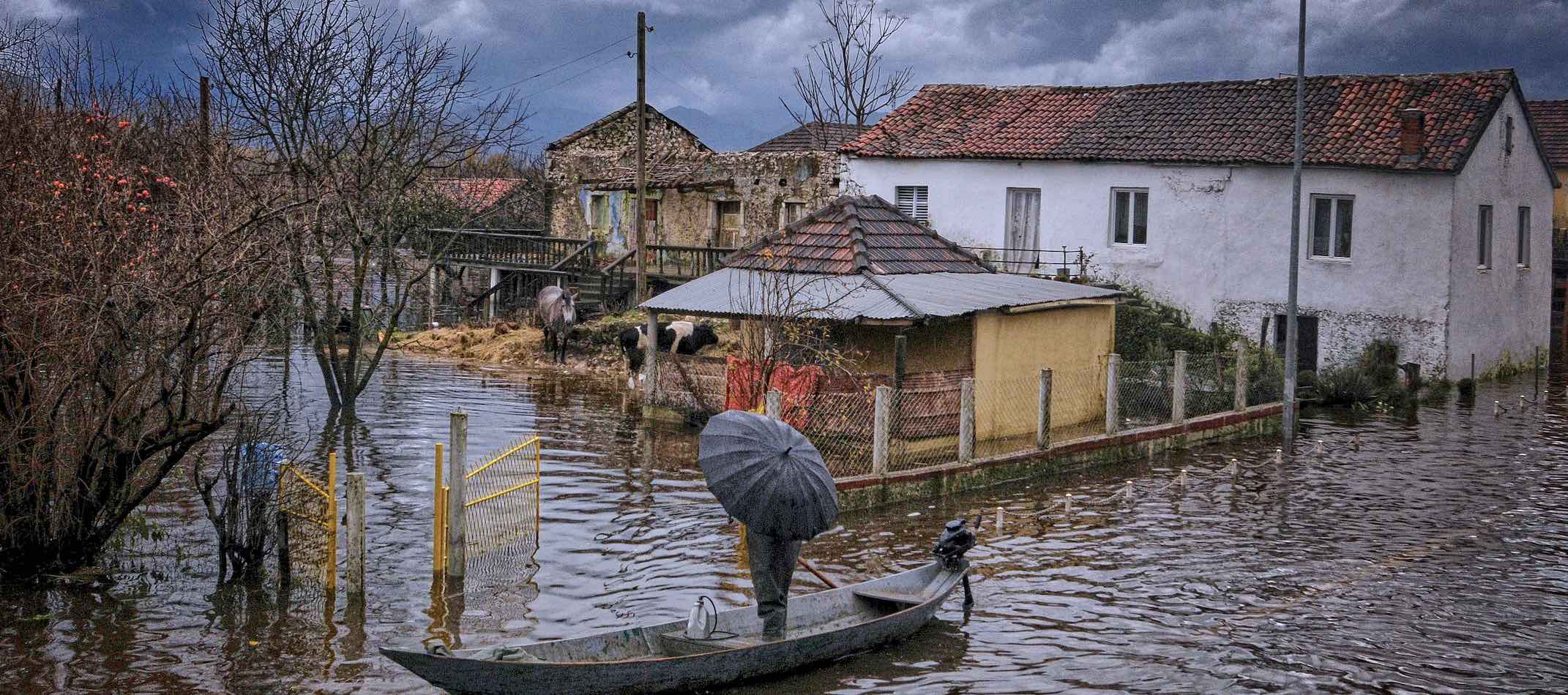
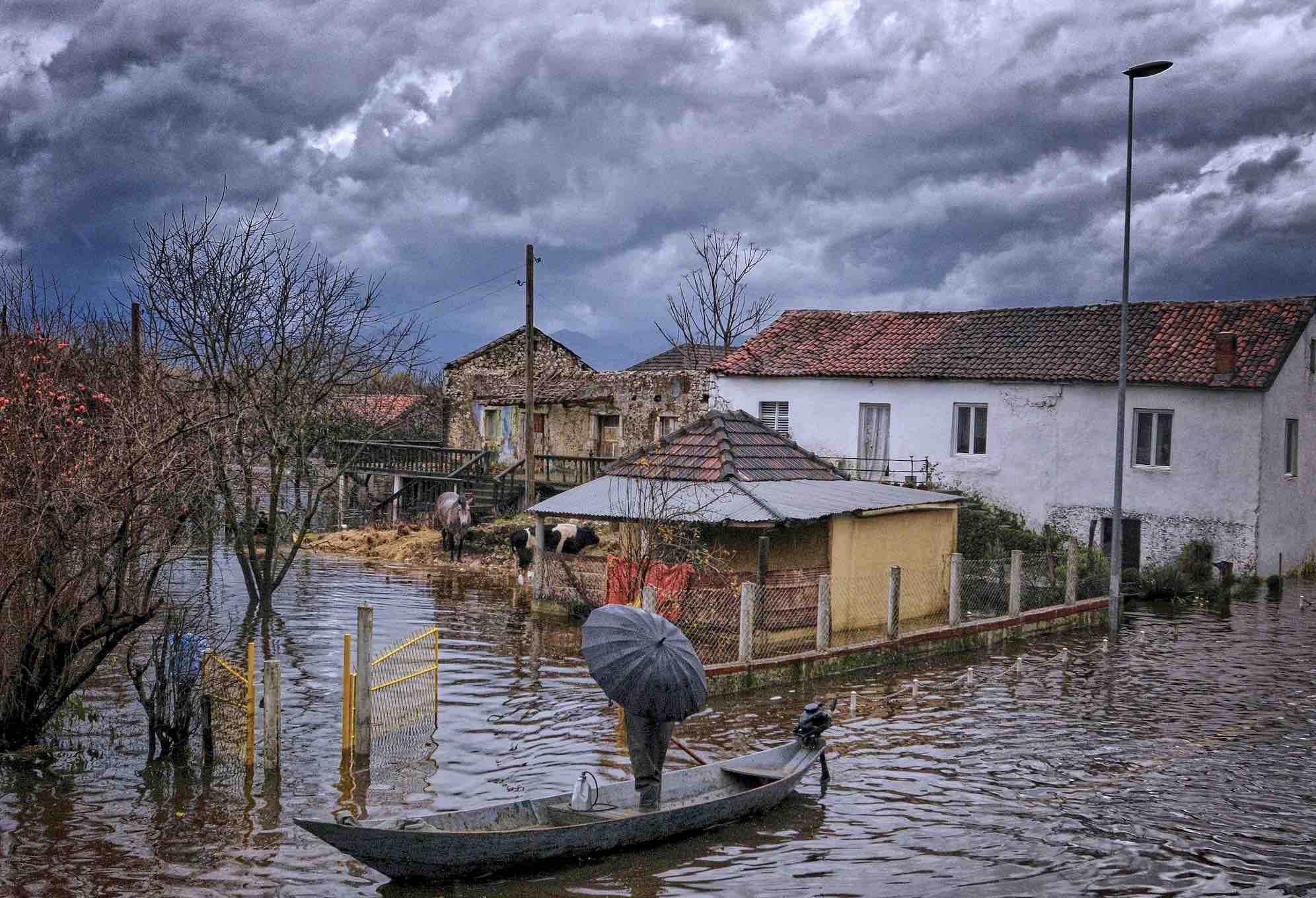
Supporting the foundations for sustainable adaptation planning and financing in Morocco
The project's goal is to support Morocco in creating a systematic framework for integrating adaptation needs into development planning. This involves establishing the foundations for sustainable finance and institutional frameworks for adaptation planning at both national and regional levels. Sub-national activities include developing regional adaptation plans for five regions: Souss Massa, Marrakech Safi, Béni Mellal-Khenifra, Draa Tafilalet and Oriental regions.
Given its geographical location, climate, and coastline, Morocco is highly vulnerable to climate change. The projected impacts by 2050 will significantly affect key productive sectors and infrastructures of the Moroccan economy. In 2022, Morocco suffered from a fourth consecutive year of low rainfall, facing a historic drought. With these structural vulnerabilities, the urgency of adaptation to climate change has become significant.
Morocco has undertaken numerous climate change adaptation and risk management projects, addressing specific issues such as water, agriculture, disaster risk, monitoring frameworks, data, and capacity building. However, these efforts have been implemented in isolation and in a fragmented manner, lacking a cohesive and interconnected approach. Moreover, climate change risks and adaptation needs have been excluded from development planning and investment decisions, particularly at the regional level.
Morocco started its national adaptation planning process in 2015 and developed a detailed NAP roadmap. Achieved in 2021, the NAP serves as a comprehensive medium- and long-term adaptation strategy, incorporating key actions and strategic objectives. The formulation of the NAP involved extensive consultations with key stakeholders and received formal endorsement from the Government.
The Moroccan Climate Change Policy and the NDC (updated in 2021) outline sectoral adaptation goals and targets and highlight critical cross-cutting pillars. The project builds upon the progress to date and helps operationalize the NAP, with a specific emphasis on the subnational level, by translating strategic objectives into tangible actions. Moreover, the project aligns with and complements other ongoing initiatives in Morocco related to adaptation and climate risk management.
In addition to the main project implementing partner, the Ministry of Energy Transition and Sustainable Development, the project works with partners in government, non-governmental organizations, and the private sector. The project seeks to create a framework for systematically integrating adaptation needs into Morocco's development planning, building upon the existing foundation for climate change adaptation. This framework will enable the implementation of high-impact adaptation measures building on strengthened institutional arrangements for adaptation planning, including strategic coherent planning instruments aligned with national priorities and sustainable sources of adaptation finance.
The project aims to design a framework for systematic integration of adaptation needs into the country’s development planning building upon the existing foundation for climate change adaptation. The expected results are grouped around the three main outcomes and include:
- setting up of coordination and governance structure for adaptation at the national and regional levels;
- strengthening national and regional M&E system;
- improving communication and awareness on adaptation planning;
- mainstreaming gender sensitivity into government’s planning processes;
- assessing climate risks and vulnerabilities for key sectors in three regions;
- identifying adaptation options, assessed and prioritized in the three selected regions;
- elaborating five regional adaptation plans;
- sustainable financing of regional adaptation plans;
- strengthened private sector engagement and investment potential.
Project updates
The project inception workshop was held in March 2022 with the participation of all project stakeholders.
Output 1.1. Regulatory text defining coordination structure and institutions mandate is in place.
A work plan and schedule for national and regional coordination bodies were created and approved, including the development of guidelines for climate information collection and for climate change risk and vulnerability assessments at the regional level for key sectors (water, agriculture, and infrastructure).
Output 1.2. National and regional Monitoring and Evaluation (M&E) system for adaptation developed.
Consultations were undertaken on building the M&E system, involving the development of climate change metrics and indicators linked to existing initiatives in Morocco. Activities have included analyzing existing systems, proposing scenarios for consolidating national platforms (MRV), drafting a guideline for gathering standardized climate information, including loss and damage data and socio-economic and gender-disaggregated data to feed into the M&E system, and assessing improvements for the Regional Information System on Environment and Sustainable Development (SIREDD).
Output 1.3. Communication and awareness to support effective adaptation planning improved.
A communication and awareness strategy was prepared and published in 2023, including the design of an adaptation repository website.
Output 1.4. Gender sensitivity is applied and addressed throughout the project life-span.
Stakeholder consultations were held in 2023, including a stocktaking of existing approaches and identifying good practices for gender integration into the project.
Output 2.1. Climate risks and vulnerabilities assessed in key sectors in 5 regions.
Consultations for mapping existing datasets and metrics were launched in 2023, accompanied by consultations for establishing guidelines and methodologies for regional-level climate change risk and vulnerability assessments in key sectors.
Output 2.2. Adaptation measures identified, assessed, and prioritized in the 5 selected.
Adaptation measures have been identified, assessed, and prioritized in five selected regions (Souss Massa, Marrakech Safi, Béni Mellal-Khenifra, Draa Tafilalet, and Oriental). Consultations related to the elaboration of regional adaptation plans for the pilot regions were held in 2023.
Output 2.3. Five regional adaptation plans formulated and integration with regional development and land-use plans facilitated.
The updated territorial climate plans (PCTs) adaptation chapter for the five pilot regions is being developed, along with a guideline for integrating PCTs into regional development and planning. Two interregional dialogues with the pilot regions are being arranged.
Output 3.1. Sustainable financing of regional adaptation plans strengthened.
Efforts to bolster sustainable financing for regional adaptation plans are in progress through consultations and activities. This includes developing an indicative project pipeline and conducting pre-feasibility studies for key adaptation priorities in each region.
Output 3.2. The private sector is strongly engaged and, its capacity to support adaptation is further enhanced.
At the national level, the House of Representatives of the Kingdom of Morocco adopted on October 18, 2022, framework law No. 03.22 forming the Investment Charter. This framework law aims to "promote private investment” to reach the rate of two-thirds of total investment by 2035, following the recommendations included in the New Development Model. This legislative breakthrough is helping to promote private-sector engagement in adaptation.
A two-day national climate investment forum was held in 2023, targeting financial institutions and private equity funds to discuss opportunities and challenges in private investments for adaptation. An assessment of the status, barriers, and opportunities for private sector investment was also undertaken.
Output 3.3. The private sector´s investment potential in adaptation is further strengthened.
The private sector's investment potential in adaptation is being strengthened through activities such as analyzing the interest, feasibility, and costs for setting up business incubators and organizing an ‘Adaptation Innovation Competition’ to encourage innovation and entrepreneurship. Additionally, an analysis of the national catastrophic risk insurance program through a public-private partnership is being conducted.
Outcome 1: The institutional framework for adaptation planning is strengthened and awareness is enhanced at national and regional levels.
Outcome 2: Regional adaptation plans (Territorial Plans against Global Warming) formulated for five vulnerable regions in Morocco and integration into regional development and land use plans facilitated.
Outcome 3: The foundations for sustainable finance for adaptation are strengthened.










